Garmin has just announced the new Index S2 smart WiFi scale, building slightly upon the previous first-generation Index WiFi scale released nearly 5 years ago. This new model switches to a color display that’ll show weight trending information, helping to visualize the normal day to day fluctuations. It also adds a handful of tweaks like being able to customize the data widgets on-screen, showing difference to previous weigh-in, as well as increasing the sensitivity of some of the sensors driving the algorithms related to body fat & impedance-based measurements. Overall it’s a minor upgrade.
I’ve been using the scale for a bit now, but also just as importantly the original Index scale for quite some time before that. So I’ve got a pretty good idea side by side on how they work. So I’ll dig into all the nuances between the two, so you can figure out if it’s worth the cash, since, it’s pretty expensive at $149.
Note that I was sent a media loaner of the Index S2 scale, which as usual I’ll send back once I’m done here. If you found this review useful you can hit up the links at the end of the review to help support the site. Oh, and the Index 1 scale is one I bought myself a while back.
Finally, look, I get it – this is a weight scale – so I’m gonna try my best (and probably fail) at making this review semi-digestible. Wish me luck.
What’s new:
Now, to run through what’s new on this scale, I’ve got the Index 1 and Index S2 side by side. Both literally and figuratively. I’ve been using them side by side, seeing how they compare for a bit now. Here’s all the differences between them (and yes, these are mostly minor):
– Added new color screen
– Added weight trend to show 30 days of data
– Added previous weigh-in vs current weigh-in data difference to screen
– Added ability to customize which data (widgets) are shown on scale
– Increased sensitivity of sensors
– Tweaked some algorithms related to body fat & other impedance-based measurements (based on increased sensitivity of sensors)
– Can now connect up to 7 WiFi Networks
– Reduced scale size (dimensions) very slightly
– Changed from AA batteries to AAA batteries
That’s in addition to all the baseline bits it previously did:
– Measures weight (lbs/stones/kg)
– Body Mass Index (BMI)
– Body Fat Percentage
– Body Water Percentage
– Skeletal Muscle Mass
– Bone Mass
– Supports up to 16 users
– Maximum weight of 400lbs/181.4kg
– 9 Month Battery Life (4xAAA batteries)
– Uploads via WiFi, configuration via Bluetooth Smart
– Both black and white versions (Pro Tip: The black version is impossible to keep clean, white is half-possible).
So just putting the two scales side by side you can see the main differences are mostly visual (the white one below is the older scale). The size is a bit smaller, though not massively so. And of course, that color display versus the black/white one previously. Albeit, I can’t say having a color display on my weight scale next to the toilet has been a major improvement in my day to day life. Now, if they could run YouTube on that thing…then we’re talkin’!
The other thing Garmin says they spent considerable time on was WiFi connectivity, seeming to acknowledge some of the problems people have had with the original Index scale. Though, it does seem like most of those problems have tapered out over the last 6-8 months.
Ok, with those quick newness bits covered, let’s get it out of the box.
What’s in the Box:
Crack open the relatively thin box of the S2 and you’ll find the scale chilling inside a paper wrapper, with a bit of instructions floating in the box somewhere. Underneath the scale are 4 AAA batteries, and four feet to be used if the scale is placed on carpet.
Here’s a closer look at the feet and batteries. You don’t need the feet if placed on a hard surface, but the batteries are required if you want the scale to do anything other than act as a paperweight.
And here’s the scale sitting atop its wrapper. This is the cleanest it’ll ever be. From this moment forward it’ll look worse, even if you never touch it. Dust collects at an astonishing rate on this thing.
Oh, and here’s the manual. Don’t worry, we’ll cover all the bits as part of this review here.
Ok, let’s get it all set up.
Setup & Configuration:
First up we’ll need to stick the batteries inside the S2. I trust that if you’re investing in a WiFi connected smart scale, you’ve got the technical prowess to correctly insert 4xAAA batteries.
Also, while on the back of the scale you’ll notice two things you can poke at (besides the springs on the battery compartment). The first is a reset button, which kicks the scale into pairing mode, and the second is a selector to switch between Pounds, Kilograms, and Stones.
I’ve always found it kinda funny that for a digital scale that shows a gazillion metrics based on information in your account, that it relies upon a physical switch to change the way weight is shown. Perhaps there’s a number of people that need to switch quickly between the modes, I don’t know.
In any event, by the time you’re done dorking around with that switch, you’ll find the Index S2 showing off its new color screen, waiting for you to pair it up.
This is where you’ll grab your smartphone to set it up, using the Garmin Connect app. It’ll find the device just like a watch. And, once this post goes live the image and codename Garmin uses will magically change to the correct product image and real name instead of placeholders (Garmin does this for all products, to minimize leaks).
It’ll ask you to confirm the PIN number, to ensure you’re not snooping on your neighbor’s unconfigured scale or something.
And then finally, it’ll ask you for the WiFi information.
You can select and save up to 7 WiFi networks within the Index S2 scale. I suppose that might be valuable for use cases where a coach/physician/staff/athlete is moving the scale between locations on different WiFi networks, perhaps having a hotspot one + a normal office/home location.
I did have some initial issues trying to get the scale to pair with my Google WiFi guest network, however, once I set it for the primary Google WiFi network it worked fine. There’s no technical differences between those two to my knowledge, and Garmin isn’t clear either if perhaps it was resolved by a software update that occurred moments later on the scale.
Speaking of which, once you complete that connection, the scale will go off and download a software update for itself via WiFi.
In fact, every time you step on the scale it’ll check for software updates, and if there is an update, it’ll install it the following night between 1AM and 4AM.
Also, backtracking a step or two slightly, you’ll define the initials the scale displays when you step on it. Essentially your name, but somehow only four characters are allowed. Luckily, in my case, my first name fits easily into that.
The app will ask you if you’d like to invite any other users to the scale. You can invite up to 15 people (thus presumably making 16 people in total). While it’s unlikely your Brady Bunch is that big in your house, this is more for team scenarios where multiple athletes are weighing in.
With all this done (which really only takes a minute or two), you’re good to go.
Weigh-ins and Data:
By now the scale will have updated itself and be ready to use. To use it, simply tap or kick it. Which will wake it up. This is a slight change from the Index 1 scale, where I can simply step on. In my case, simply stepping on the Index S2 does nothing. Once it’s awake, it’ll show the zero/empty weight:
Go ahead and step on the scale, and you’ll see the weight fluctuate a bit for a few seconds before deciding on a final weight.
Once it decides on that final weight, the little weight icon will turn green, indicating that weight is locked in.
At this juncture you can step off the scale, it’s done its thing, and will flash the initials/name of who it thinks you are, based on your weight and the historical weight data it has. If it gets it wrong, you can simply use your foot to tap left or right, which iterates through the known users on the scale. Also, if you want to discard a weigh-in, the easiest way to do that is just simply go to the “?” user, and then let it vanish to nowhere. Or, you can just delete the data point afterwards on Garmin Connect (smartphone or web).
You’ll notice above it shows +0.2 above my name, this means I gained +0.2lbs since the last weigh-in. The idea here being that if you wanted to do a workout (such as a long run on a hot day), you can compare the weight metric to the previous value quickly and easily. So you’d weigh yourself pre-run, and then again post-run. For example, I’ve found that for most 45-60min indoor trainer workouts I tend to lose about 2 pounds. Of which, the vast majority of that would of course just be water weight.
And while the goal isn’t realistically to try and have 1:1 replacement of fluids during a workout (especially running), you can at least use the information to guide your hydration choices.
The saving of multiple data points per day certainly isn’t new in the Garmin Index scale world, it’s been doing that for quite a while with the older scale, but it wouldn’t show the change in weight.
What is new with the S2 scale though is this little trendline chart seen on the scale. This is basically the pièce de résistance of the Index S2 scale, showing your weight over the last 30 days, as well as progress towards a goal line (in green).
However, if you’re coming from the previous Garmin Index scale, you’ll first have to live with a bit of disappointment: This marquee feature doesn’t actually pull any of your historical Index 1 weight data in to the scale itself.
Seriously.
A connected scale that has all the data in the world, somehow doesn’t pull the data in from arguably Garmin’s best customers (the ones who are buying yet another scale from the company). It’s mind-boggling. So in my case, I’ve got piles of data that would show up here – and most importantly from a vanity standpoint, show up with a nice decreasing trendline over the past while. But nope.
And it’s easy to say ‘Sure, it’ll fill in over the course of the next 30 days’, and yes, it will. But that’s not the point. Its entire point in life is to be a CONNECTED scale. It fails somehow at this most basic task for the most pro-Garmin customers. Yet, it pulls in the weather data just fine.
In any event, after it’s done showing you that trendline, it’ll iterate through the following metrics: Body Mass Index (BMI), Body Fat Percentage, Body Water Percentage, Skeletal Muscle Mass, Bone Mass, and Weather. Another new feature with the Index S2 scale is the ability to customize which of these metrics it’ll show each time you step on it. So if you don’t want to see a particular metric you can disable it within the settings on the smartphone app:
Note above though that you can’t have a ‘Biggest Loser’ style scale and not show weight at all (just take readings).
As it iterates through each of these data points it’ll show an icon above to it indicating what it is, such as muscle mass below.
Or bone mass or body water percentage:
And yup, even the weather, showing the slated high/low for the day as well as the current temperature. The idea here simply being that if you’re getting ready in the morning and just going in or out of the shower, this could guide your clothing choices for the day.
After all that’s done, it’ll display your weight one final time, and then shut itself off – waiting patiently for its 30 seconds of use each day.
Behind the scenes, this data is saved on Garmin Connect, and thus accessible from Garmin Connect Mobile or Garmin Connect. There’s a widget you can add to the dashboard to show your current weight. Alternatively, you can view more details in the ‘Weight’ section under ‘Health Stats’
In the weight section you’ll see every individual weigh-in, as well as trending and even the variance of multiple weigh-ins on a single day (the little grey blobs indicated on certain days with multiple weigh-ins).
(Note: Above, I was purposefully taking a bunch of weigh-ins slightly differently to show multiple weigh-ins on a single screenshot)
You can delete weigh-ins if you want, as well as add a weight goal, which will show up on your trending charts both on the app and on the device itself:
For the weight scale itself there are a few options in the Devices menu. As noted earlier you can change the widgets, as well as invite additional users to the scale.
Now – what about accuracy? Well, given the current world climate it’s a bit difficult right now to waltz in and get a fancy body fat analysis and such done. Though, I have done so in the past and recruited a bunch of people to test various devices. When I look at the Index 2 vs Index 1, the weight is almost always nearly identical – such as .1lbs apart. The body fat however was pretty substantially different, usually about 2-2.5% (generally higher) with the Index 2.
I asked Garmin about this, and here’s what they had to say:
“For body fat and the other impedance-based metrics, there’s been some under-the-hood changes including tweaks to the algorithms. The tweaks were to allow for more accuracy and more sensitivity in the measurements. There will almost certainly be some noticeable differences between readings on the original and the S2. With more sensitivity, the S2 will allow for more fluctuations and movement over time in those metrics compared to the original.”
Now within the Index scales you can tweak your profiles Activity Class (seen above), which in theory improves accuracy for body fat measurements on more athletic people. Though, in my case it made no difference. Typically this would be for people closer to single-digit body fat %’s. There’s been too many late night Stroopwafels for me lately for that to impact my testing.
Anyways, as I was saying – if I look at impedance metrics like body fat and muscle mass, based on all the testing I’ve done historically, I don’t focus too much on the absolute values, and instead look more at trending. After all, the fact that one scale has me 2.5% higher than the other side by side is a great example of that. Undoubtedly Garmin would argue (perhaps correctly) that the newer technology/sensors/algorithms in the newer scales are indeed more accurate.
Ultimately though, for me, I don’t put much value in these extended metrics using electro impedance like other scales (nor do I put much value in people using calipers, most folks screw that up – despite having done it ‘hundreds’ or ‘thousands’ of times).
Device & 3rd Party Integration:
The main appeal of buying a Garmin Index scale over any other scale is if you’re in the Garmin ecosystem. If you don’t have Garmin devices, then frankly the appeal evaporates pretty quickly, and there are other scales that cost just half of the Garmin scale with basically the same features.
But within that ecosystem it’s pretty good. For example, your Garmin watch will automatically update your weight anytime it syncs with your phone, which, is basically 24×7:
So that’s handy if you’re focused on losing weight, rather than finding out three months later that your watch weight is still at a substantially higher value.
Moving to 3rd parties, things are super mixed. Some platforms support it, but many disappointingly do not. This isn’t entirely the fault of Garmin, but it’s also an area they could put some effort into convincing their partners (cough, Zwift). Assuming an app is supported though, you can link it up to get weight data automatically sent to it. For example, here’s TrainingPeaks:
Note though that this is a different setup than your regular Garmin workout/structured workouts sync, see below how there’s both a Health Sync option for weight data, as well as another one for workouts/activity data. Ideally this would be more cohesively presented to a user upon any link-up, but it’s not today.
But unlike Withings or Fitbit, there’s no clear landing page on all the services/partners Garmin supports here. So you kinda have to figure them out yourself. And, when there’s gaps, you’ve gotta figure those out too.
For example, with the huge surge in indoor training, apps need correct weight information to accurately simulate cycling courses/speeds. And while Zwift does support weight scale integration, they haven’t lit up the Garmin side of that equation. However, some creative 3rd party apps have basically made a bridge where you can do that via a Fitbit account, but, that 3rd party app (SmartScaleSync.com) costs $15/year.
While I don’t use it myself, a bunch of people seem pretty happy with it. Alternatively, for iPhone users, there’s also the HealthFit app, which can pull the data that Garmin Connect Mobile puts into Apple Health, and from there send it off to 3rd party platforms.
But realistically, this sorta thing shouldn’t be on 3rd parties. Garmin has a robust API/platform for this data, but just seems to lack the marketing or something for getting these 3rd parties onboard directly.
Summary:
For the most part, we don’t really see major iterations in connected weight scales these days. Or these years. The repeatable pattern is every few years Withings, Fitbit, or Garmin will release a minor update of their scale with a handful of new features. Sure, a few people will upgrade their units, but for the most part this is just ensuring that the product doesn’t appear to be from nearly 5 years ago. Which is fine, it doesn’t have to be major upgrades each time. In the case of the Index S2, it retains the same expensive price as previous, but now adds the new color display and trending information.
Still, I was hoping for a bit better 3rd party support here – albeit that’s not entirely Garmin’s fault. While Garmin has done that development work, there’s gaps in partners picking it up. However, what is firmly in Garmin’s control is the lack of weight trendline information properly accounting for historical data for existing Garmin Index scale users.
As with all my scale reviews, whether or not you find value in the extended metrics beyond just simple weight is up to you. For straight baseline weight, I find most of these scales (even cheap department store scales), tend to be surprisingly consistent and accurate. Beyond that, for electrical impedance-based metrics like body fat, the accuracy varies quite a bit from model to model, and the value can also be a bit more questionable too.
I do in general find WiFi scales a far better option than Bluetooth only scales. WiFi scales tend to be ‘set it and forget it’, versus a Bluetooth scale usually has dependencies on having your phone nearby, the app opened, Apple or Google not having broken something in the recent update, etc… Whereas a WiFi scale doesn’t care about your phone and does it all behind the scenes.
Ultimately, if you’ve got a Garmin device and want weight automatically updated on your account/devices, there are not many clean options. There are some 3rd party integrations that have half-heartedly worked over the years (like MyFitnessPal syncing), but usually they eventually break. This one tends to just work with minimal fuss, even if it’s at a substantial premium compared to competitor offerings. Now, how do I get YouTube running on that display?
With that – thanks for reading!
Found This Post Useful? Support The Site!
Hopefully you found this review/post useful. At the end of the day, I’m an athlete just like you looking for the most detail possible on a new purchase – so my review is written from the standpoint of how I used the device. The reviews generally take a lot of hours to put together, so it’s a fair bit of work (and labor of love). As you probably noticed by looking below, I also take time to answer all the questions posted in the comments – and there’s quite a bit of detail in there as well.
If you're shopping for the Garmin Index S2 WiFi Scale or any other accessory items, please consider using the affiliate links below! As an Amazon Associate I earn from qualifying purchases. It doesn’t cost you anything extra, but your purchases help support this website a lot.
And of course – you can always sign-up to be a DCR Supporter! That gets you an ad-free DCR, access to the DCR Shed Talkin' video series packed with behind the scenes tidbits...and it also makes you awesome. And being awesome is what it’s all about!
Thanks for reading! And as always, feel free to post comments or questions in the comments section below, I’ll be happy to try and answer them as quickly as possible. And lastly, if you felt this review was useful – I always appreciate feedback in the comments below. Thanks!





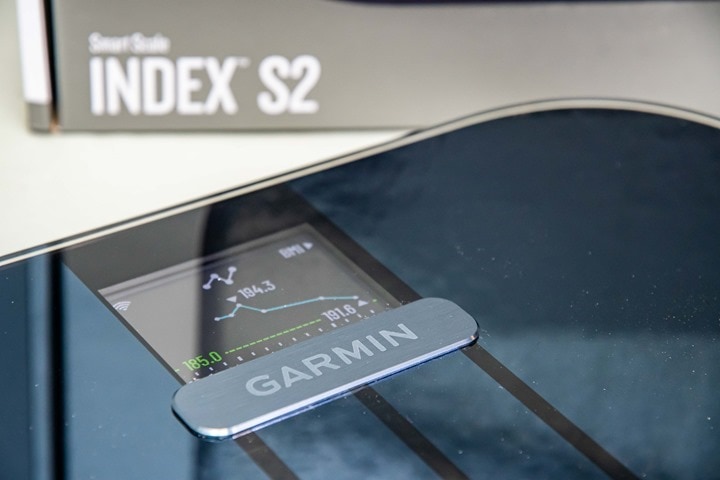
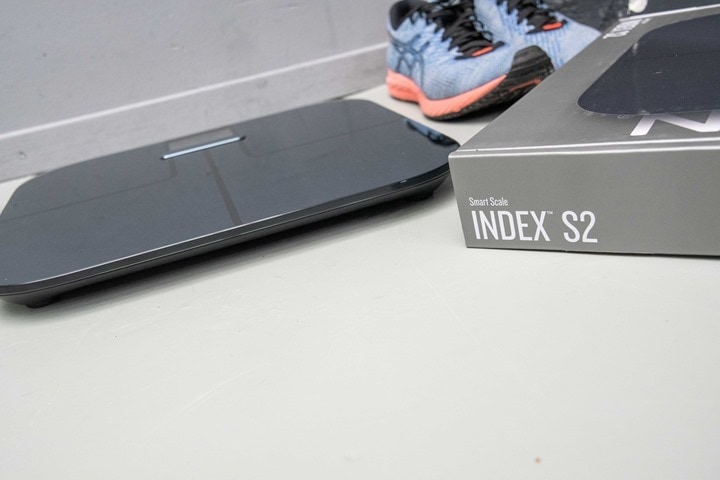

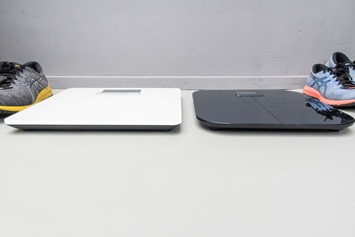
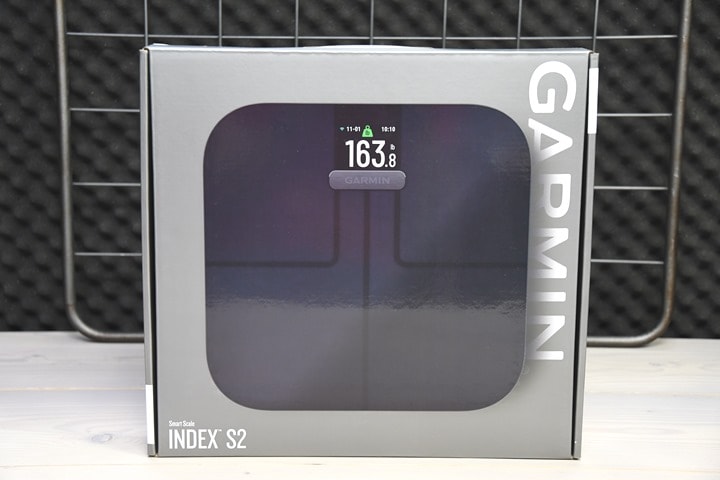
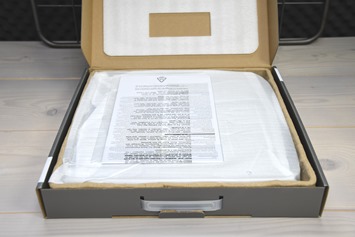
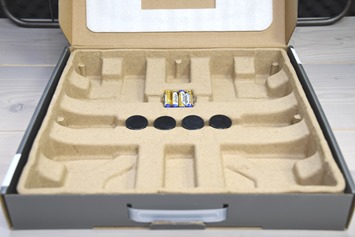
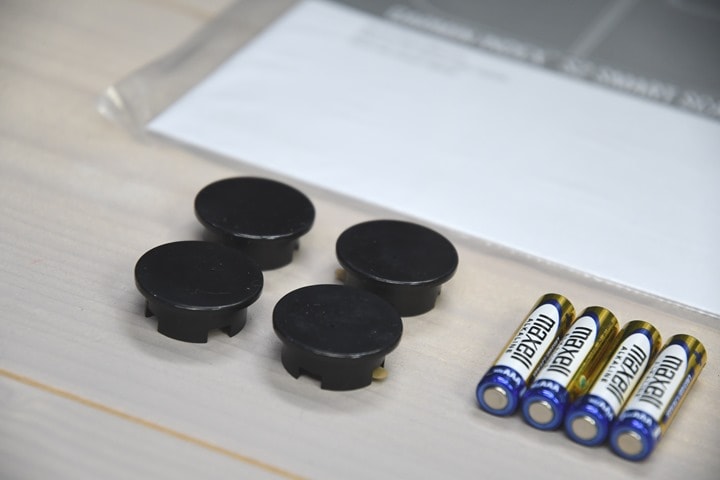
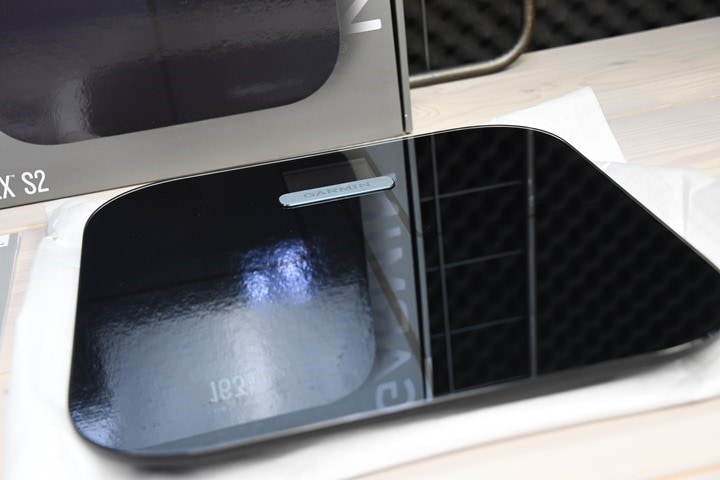
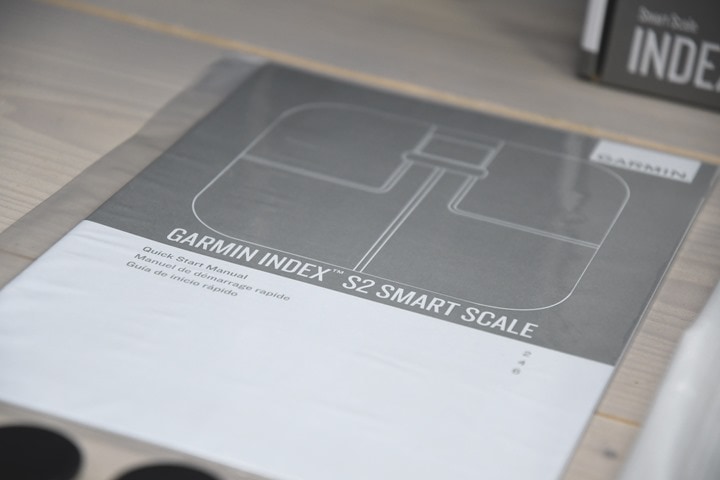
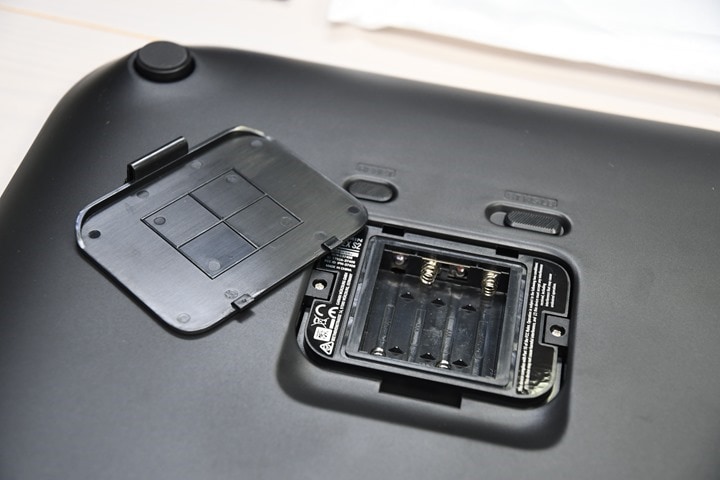
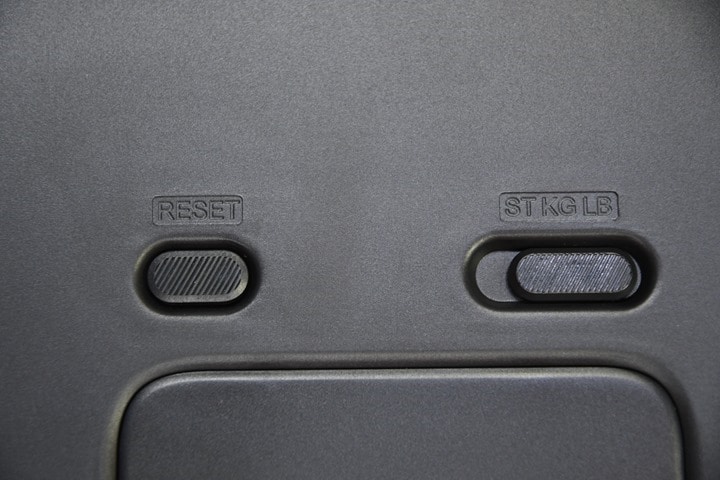
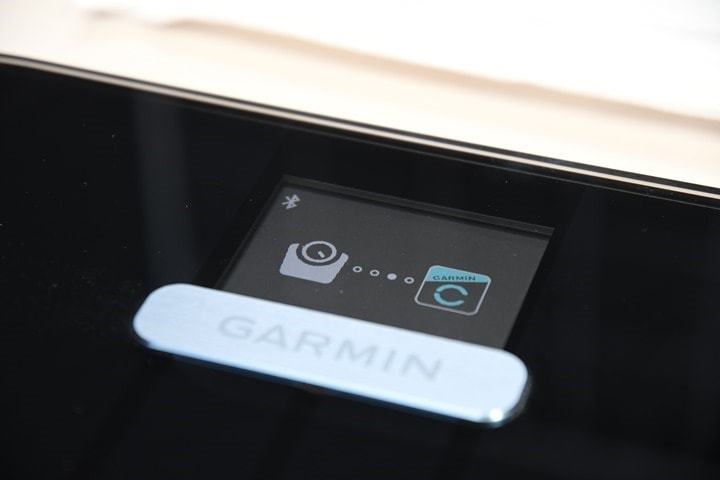
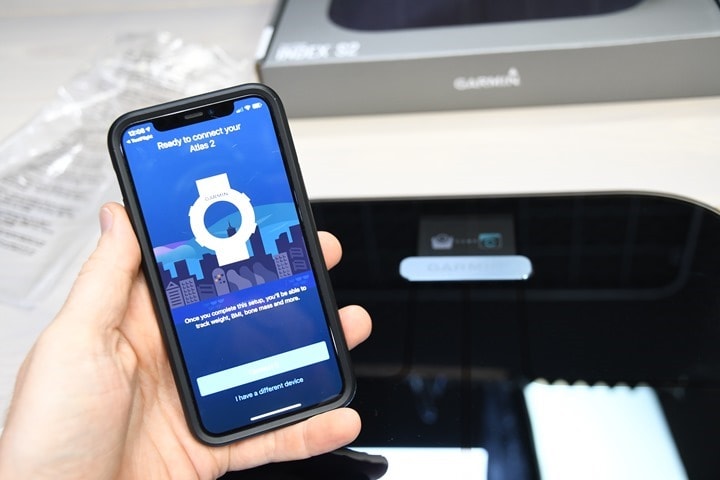
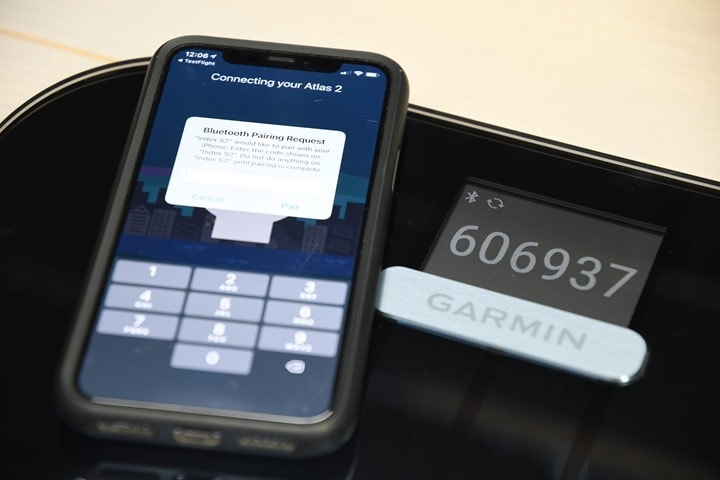
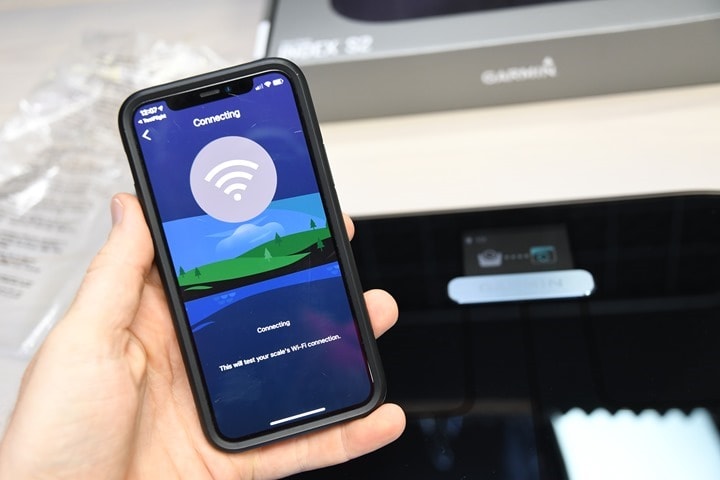

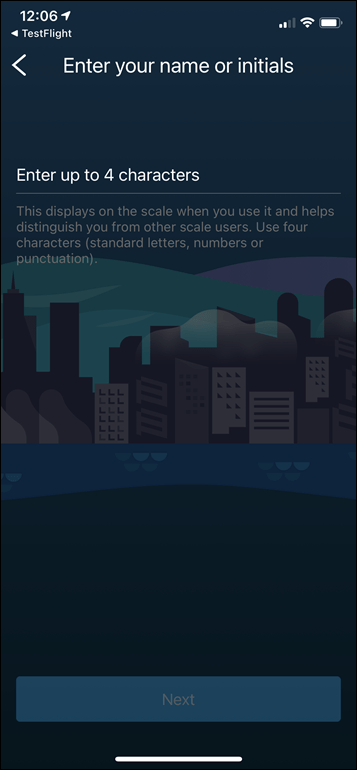
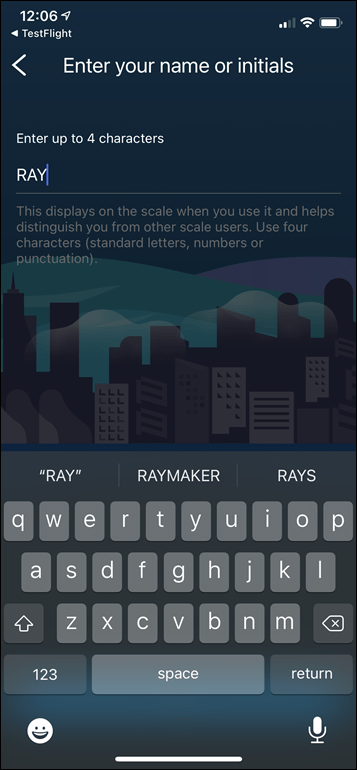
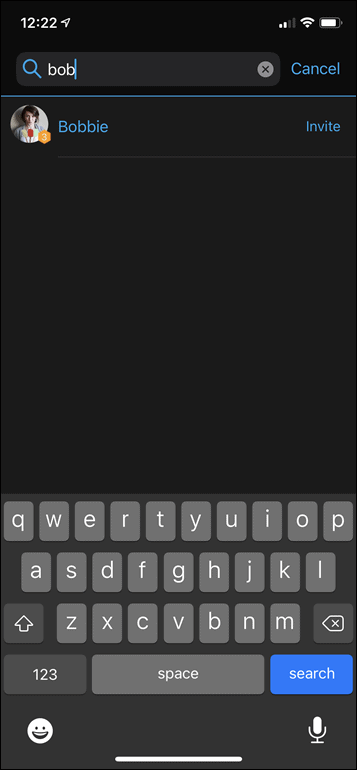
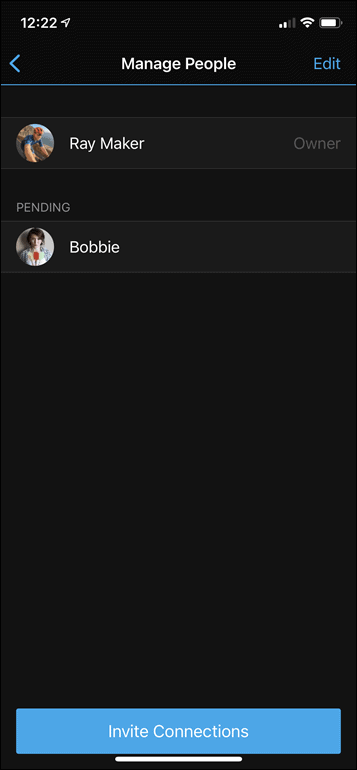
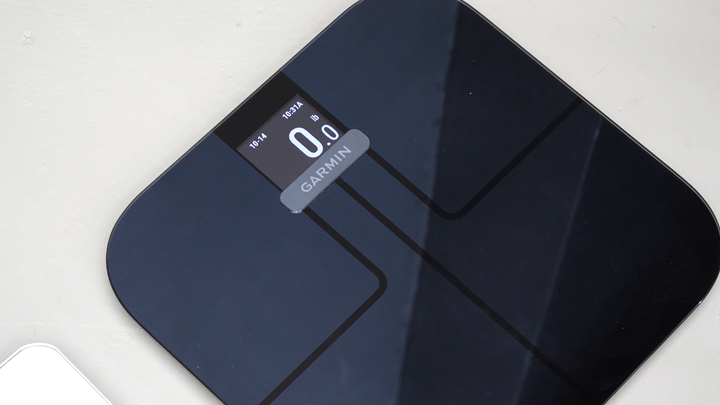
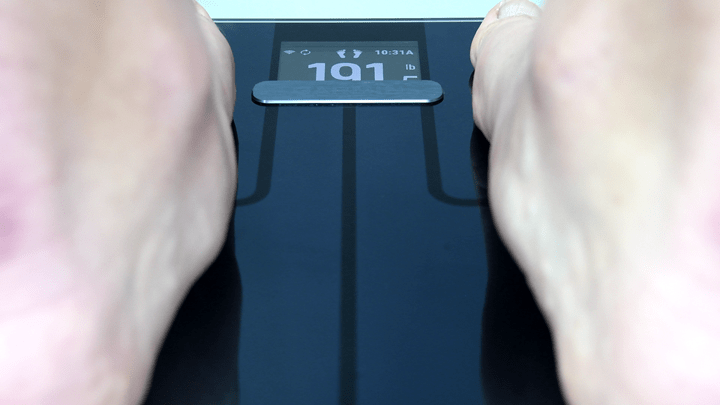
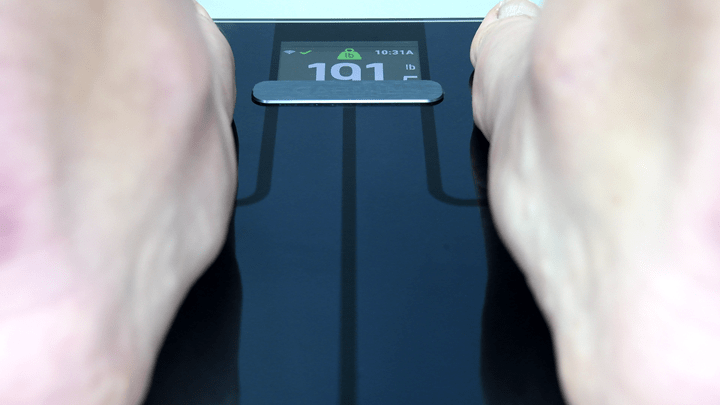
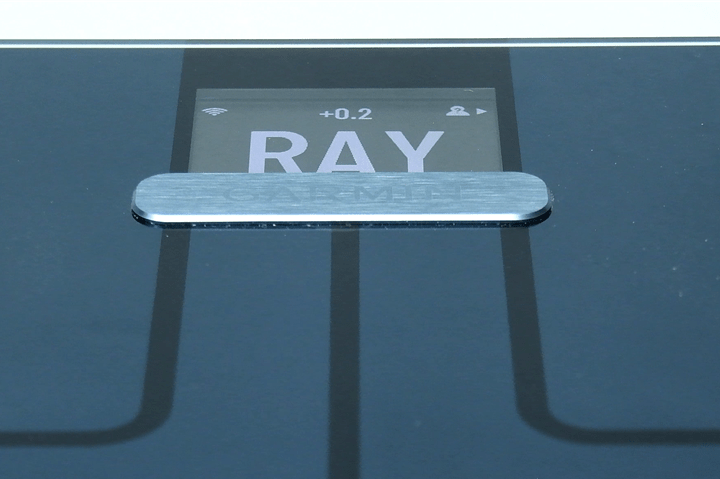
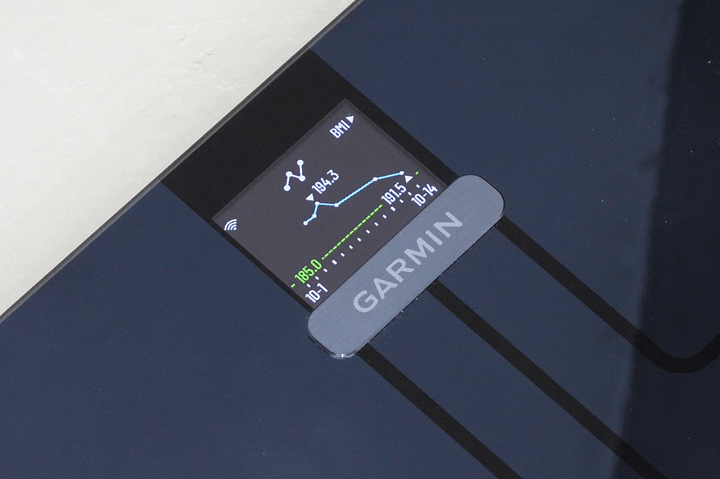
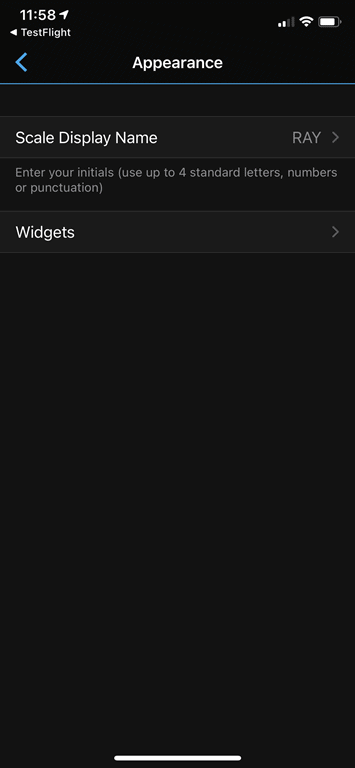
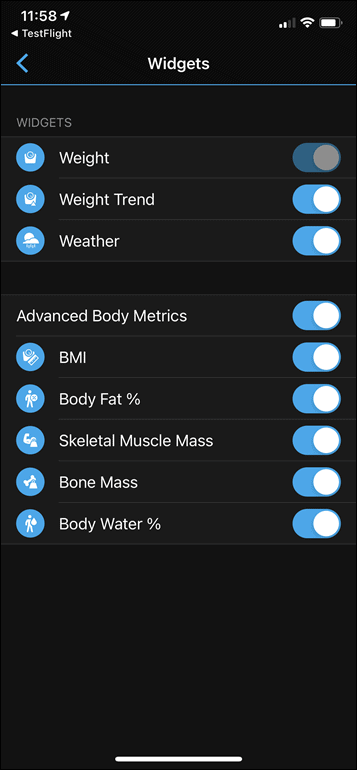
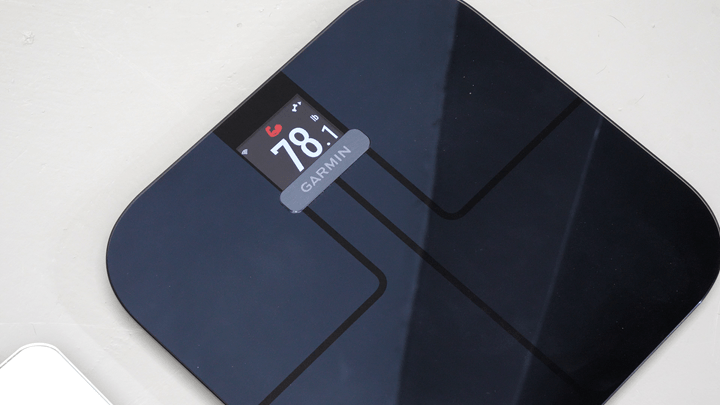
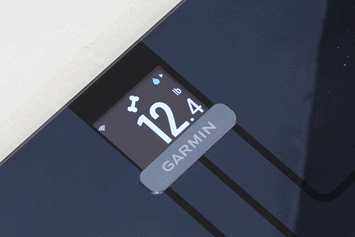
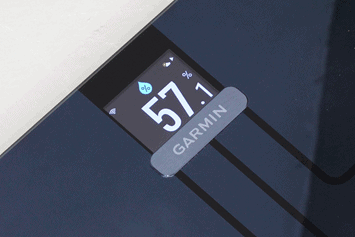
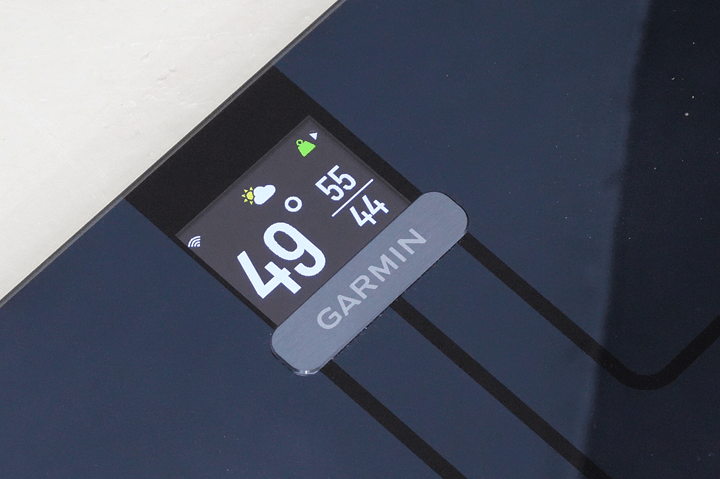
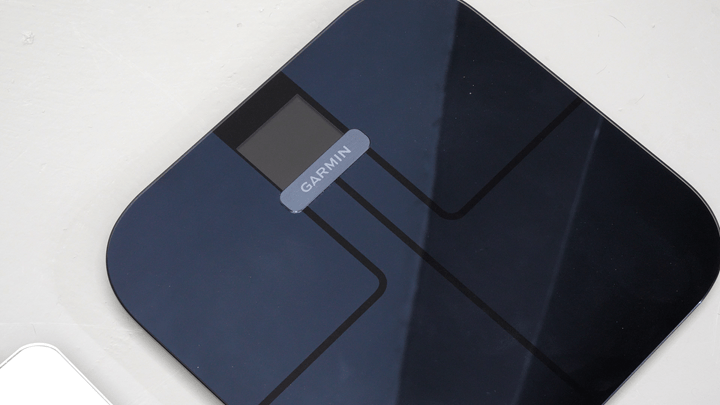
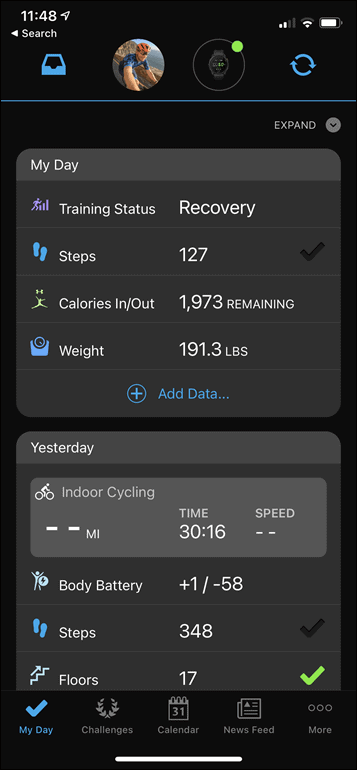
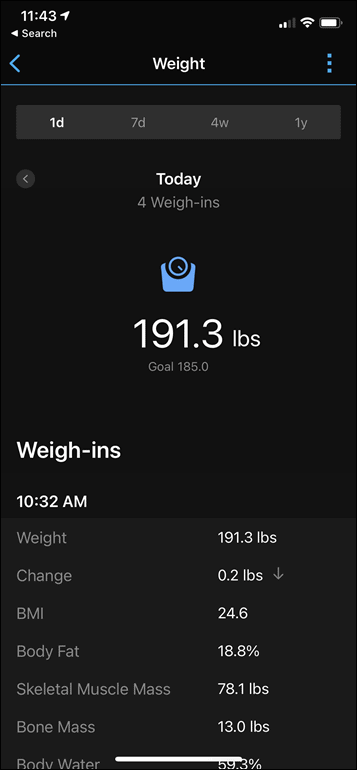
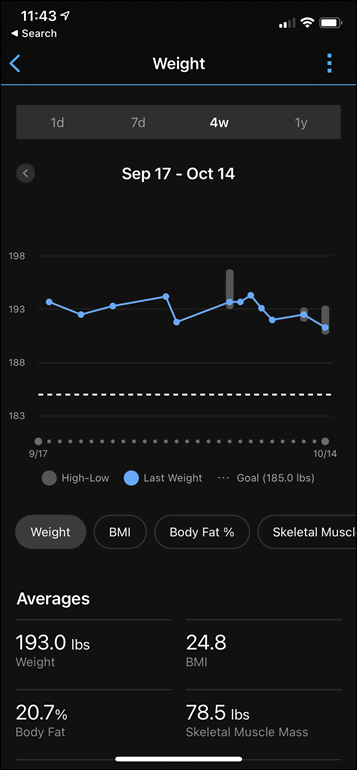
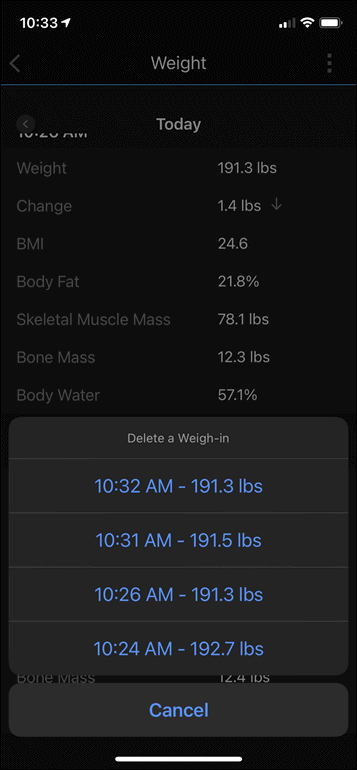
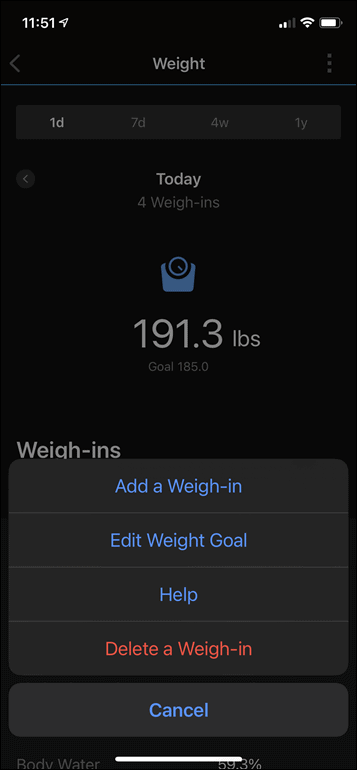
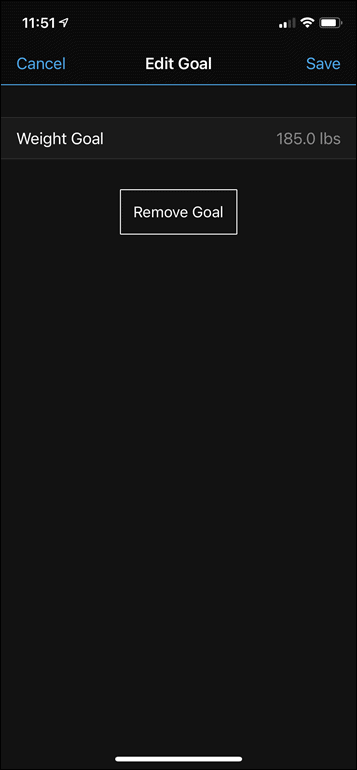
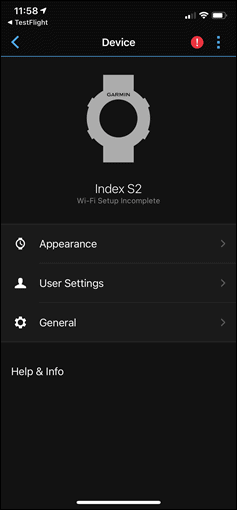
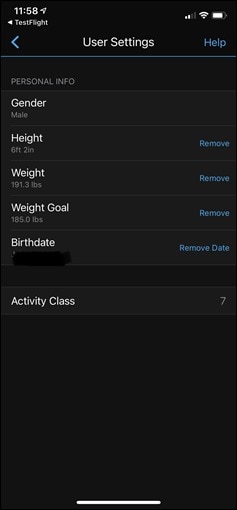
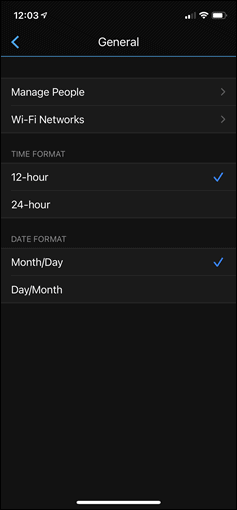
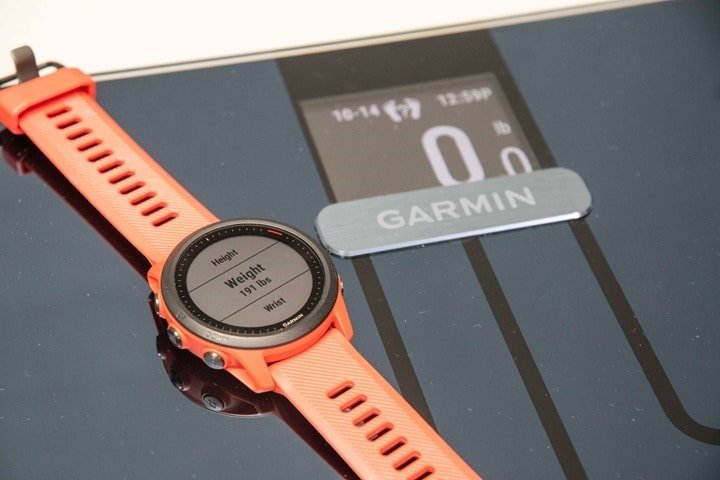




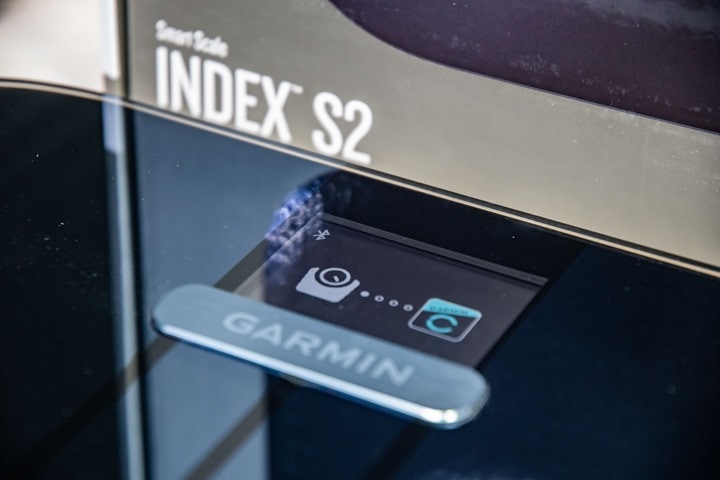
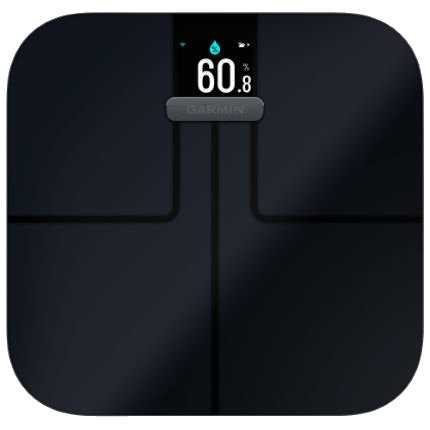
















So the older scale now will take multiple readings per day and not over write them in Garmin Connect? Based on your comments several years ago on this basis I had ruled this scale out but now am much more interested.
Yes, that was solved a few months ago.
So we now have a Swim 2 and an Index 2!. Seems like reasonable refreshes of neglected products though I will not be replacing my original Index. All the upload hassles that lasted for years (I spent hours packet sniffing), though recently solved, mean they burnt their bridges with me on this product line.
I hear you and agree 100%.
Fool
Me once, shame on you; fool me twice… … well, you ain’t going to fool me again Garmin.
Now if only Garmin will integrate with Health Mate so that we could get our data in without having to use the middleman called MyFitnessPal.
isn’t it more HealthMate intergrate with Garmin?
Do you stick to imperial metrics because of your audience or is a sentimental thing?
The audience is split. I split things in various posts both ways. Historically speaking the Index scale has done better in the US.
Finally, I use metrics both ways. Sometimes I’ll ride in KM, sometimes run in min/mile. No meaningful difference to me.
Believe me Ray, in the future there will come a day when your mile times become your Kilometre times. Then you’ll be able to glance down at your wrist and say ” hey, I can still run 6:30 pace” DAMHIKT ;-)
They should really set the units based on the person. Thats the only thing I don’t like about the Index. My wife prefers imperial and I prefer metric. I know I can just see the converted value in GCM but as they’re detecting the user anyway (and showing their weight history), why can’t they also display in preferred unit?
Nice review Ray. Quick question: does it save data in Apple Health?
Yup, Garmin Connect Mobile pushes it to Apple Health. In fact, you can also use apps like HealthFit to push that data elsewhere from your phone.
Pretty sure Garmin Connect Mobile does that rather than the scale. I have the original Index and see my weight data in health.
Awesome. Thanks.
Hello Ray, do you have any idea of avaibility for the Index S2 ?
Immediate. In fact, it was already in some shops two days ago. :)
Whreabouts? amazon.de doesn’t list it and garmin.de says Q4 2020.
MediaMarkt had it Monday here: link to mediamarkt.at
As did JB Hi Fi in Australia.
already sold out then. interesting. thanks
Available on Wiggle now (UK)
Here I am thinking I need to lose some weight and I find out I am the same height and weight as the great Ray Maker!!! Crisis averted!
My experience over years with the S1 is that its bodyfat % seems to be the product of measured weight * some black box multiplier or some simple lookup table. IE if my weight is X, my measured body fat % is always Y. Has that been your experience too, Ray (and others)? Is the experience with the S2 different?
I’ve also found this with the S1. There are times when weight goes up due to increase in muscle but body fat should sensibly go down but it seems to track with weight. It has also consistently said my BF% is equivalent of that of an olympic runner…. which it isn’t.
I will probably upgrade in the hope that either the BF% is more realistic or at least I could now get some decent trending data from it.
For me BF% should be more important that’s weight. I don’t care if my weight increases if my BF% is falling.
That is the case with every cheap scale.
Only pro scales with handlebar could provide reasonable %BF.
Conversely: I’ve had 3 DEXA scans, each 6 months apart while cutting.
The Withings/Nokia Body+ showed exactly the same trendline as DEXA, with a consistent 1-2% variance.
The original Garmin Index? Completely inconsistent, Bizarro World random number generator on the body-comp side. (weight is easy, even the cheapest of Walmart digital scale can nail that)
I don’t trust Garmin to have nailed the body-composition in the S2 so I’ll hold onto the Body+ until more user reports trickle in. (I would love tighter integration with Garmin
Do you have your withings scale set to athlete mode when you compare it to your Dexa scans? I ended up turning that off because I thought the numbers were too low.
The BF% has been completely worthless on mine. Unless by some strange miracle I have been able to hold 7% body fat for 19 straight months. Given that on some months I can see my abs, and no others, I am guessing my BF% has fluctuated a little.
No, athlete mode is disabled on my Nokia/Withings Body+.
From the reading I’ve done, that mode is for hardcore bodybuilders doing cuts and shedding water to get down to, like, 5-7% body fat. I never got below about 12%.
Bryan, I came exactly to the same conclution. S1 can only measure weight. Everything else is calculated using weight and height. Got a replacement from Garmin, but same behavior.
I do not buy the S2 unless, unless I find a serious unbiased review showing that the S2 can measure more than just weight. Once the basics are working I care about the unboxing and stuff.
Really interesting observation. I’ve only owned mine (S2) for 24 hours and I’m already suspicious. Last night I weighed in when I got home and got a body fat % reading. Had dinner and some soft drinks and got on the scales and weighed 3 pounds heavier (as expected). But my body fat percentage reading increased too! Surely I didn’t add body fat in a one hour period? If anything, shouldn’t that percentage have declined (overall weight went up due to contents of stomach and increase in hydration but fat stays the same, therefore percentage drops). I’m tempted to think the calculations work purely on weight and height. But that would be fraud, wouldn’t it?
Is the data from the scale used in Garmin Connect as base for BMR calculations (and other weight based metrics)?
If yes, is GC using so body fat to fix BMR calculation?
I have BMI > 30% and now for proper calories (BMR and active) calculations I put in GC setting ‘fake’ weight (weight I should have without extra fat). There is not body fat settings in GC so this was the only solution for proper calories calculations.
Is Garmin fixed this somehow with integration with this scale?
So do you think it’s worth the upgrade? Seems like no so much to me.
would be interesting if the bug with 7% Body Fat is really solved with the new sensors, on the old one, when you reach arround 21 BMI or so, your body fat is always 7% or so
.
Think in 3 to 5 weeks i am back on this level (7% Body Fat) on my Index 1 and of course the Athlete Mode thing with Activty Class 8 or higher never worked for me! :-)
Yep, I have the same issue with my 1st gen Index scale. Whilst having a bodyfat percentage of 7% is a nice vanity, it’d be great if they fixed it to a more reasonably accurate amount.
Like you, I never found a fix for it either. Not good for a device that cost me > £100.
I have the same question. Indeed as you said Ray the absolute value doesn’t matter, the evolution does, but the scale won’t measure below 7%. In my case it always shows 7% which is definitely off (I have 22.7 BMI), and I don’t care, but I can’t see the evolution, because I’m stuck at 7% except after Christmas for a few weeks.
It would be interesting to know if that’s fixed.
Cool trainerroad integration. Now do I really want another doodad in the house…
Hi Ray,
speaking of third-party integrations with Garmin – I’ve talked to a developers of HealthFit and they said that it’s not possible to request API access despite Garmin stating otherwise. I tried requesting said access as an individual hoping to create a personal sync solution, but also failed. It looks like you have to be quite special to get Garmin API access.
P.S. About the scales: If you really have to kick the scale before stepping on it to wake it up – that’s a huge disappointment. I don’t even know how did they come up with such an idea.
There’s really two aspects of integrations: Outbound and inbound.
Outbound is pretty easy to get approval for. Inbound is basically impossible.
Oh, speaking of which…Garmin Developer Conference starts in 14 mins…maybe some news there will drop. ;)
Did Garmin present any news about integrations on the developer conference? I was occupied doing more important (work) stuff.
Essentially they’ve consolidated all of the developer programs under one umbrella agreement. So that means a developer only has to fill out one form, and gets keys to the kingdom for all the various platforms/accesses.
For users, the more important bit is more granular control for how users give rights to their data and portions.
It’s weird that there’s a developer cannot get a simple API to upload for files yet the same can be done by any user via web interface.
They don’t want you to be using none Garmin devices. Adding any form of API to make it easy to upload data means they start loosing control of this. I have not checked the terms and conditions recently but historically you were never meant to upload data that was not from a Garmin device.
Technically parsing an arbitrary Fit file is harder than when you only deal with your own Fit files. There are plenty of discussion threads where developers are trying to figure out why Garmin connect want accept there Fit files even though there files are perfectly valid and sites that are not tied to a specific manufacturer ream them perfectly well. Garmin may or may not be trying to make life hard. They don’t need to worry as they only support there devices.
If you have any intention to mix devices then your main training platform can not be tied to a manufacturer.
“I’ve always found it kinda funny that for a digital scale that shows a gazillion metrics based on information in your account, that it relies upon a physical switch to change the way weight is shown.” I have a Withings Smart Body Analyzer. On the back there are two electronic “buttons”. One of them rotates between pounds, stone, and kg. But the scale has a mind of its own, and frequently switches units on me. It’s not worth turning the scale over and switching back to pounds, so every day is an adventure, and I’m very familiar with my weight in stone and kg as well as pounds. Having a physical switch that would fix it on one unit would be an advantage.
The original model had (has?) an issue where with my Activity Class in Garmin Connect set to 8 or 9, it would use a different algorithm for body fat% on the flawed assumption I was a world class athlete and tell me my BF% was about 5%. Changing my Activity Class to 7 (or lower) made the scale report 13-14% BF, which is a lot more credible. Do you know if this has been rectified, at least to give a more gradual phasing of algorithms between different Activity Levels?
Ray, did you test the scale with multiple users syncing to Garmin. I found that people who had partners that used the scale mucked up the Garmin health data. In fact, one of the measurements showed a 7kg weight increase in just 5 minutes (it was the weight of the pregnant girl friend!)
Thank you for your review.
I own a Withings scale (with a NOKIA tag) for already 4 years. It is funny to see that between garmin and Withings the only major difference is the color screen. There are no other interesting feature on the S2 that I do not find on the Withings. Of course the Withings does not integrate with GARMIN connect, but at least I am able to have the weight. And the price is 1/3.
Cheers
It goes through Myfitnesspal
The Withings App is far better in displaying trends than Garmin Connect (or at last, it was 3 years ago when I sold mine for the S1 ((wich I regretted 2.8 fo 3 years)) ).
You’re right that the physical switch for units is weird, but it would be a godsend after my withings unit which has a touch sensitive button on the bottom with ambiguous icon next to it. Literally any time my scale gets a splash of water on top the weight units reset to default and I have to manually change it back to kg using the silly button that sometimes can’t detect a finger.
How hard can this be? I know it’s probably not a big money spinner but realistically the things that were wrong with wifi scales 5 years ago are still wrong and yet they’re all easy to fix, with the major one being a simple open API in both directions.
Having said that, Zwift and Strava are the only integrations I’ve ever used outside of Garmin so I care much less about it than I thought I would. I’m tempted by this, if only because I’m 100% in the Garmin universe these days since the competition has dropped away and the Fenix line has matured. The colour screen actually is the biggest draw for me even though it will make very little difference :)
How multiple weight-ins per day are calculated? Average?
In the graph I see a dot on a lower part of the grey blob.
Btw.. I didn’t new it was possible with the original Index Scales. Will test that.
There is no calculation. Only the last weight will be pushed to the devices. Only the last weight is used to plod your trend line as a graph. No average values per day are used for that.
Only thing: you can see the range of that day via the blobs as you call them.
Hey Ray,
I own previous generation of Garmin Index and I love it (despite it’s high price). I’m wondering if you have any comparison with first generation when it comes to differen metrics like fat percentage? I’m curious if they improved something in that area or they just changed display and software a little bit :)
Hey Ray,
when you checkout your weight on website version of Garmin Connect (direct link to GC Web for today’s weight: link to connect.garmin.com)
Do you have Physique Rating or Caloric Intake available there with Index S2?
Nope, neither of those.
Thanks!
Nice “before and after” on the 10:24 and 10:26 weigh-ins . . . .
That chart shows how useless these things are, except to give indications of the direction of change…As a canonical example your bone mass changed 0.6 lb and back in the same day… I think that is a physical impossibility.
What also frustrates me is that there should be some way to say ‘Hey scale I just had a DXA scan done and these are my REAL results’ – can you calibrate yourself based on that – I can’t believe that is a hard thing to do, but none of the scales offers it… Feedback to Garmin
With the old Tanita, the measurement is being stored:
In your device
On Garmin Connect
In Healthy Edge software (desktop)
Tanita cloud (my.tanita.com)
Pricewise, the Garmin is fair comparing to Tanita. BC1000 was 190EUR in 2011 and the BC1500 is holding the price level of 400EUR since 2009…
There are almost non devices left in the Garmin store wich are able to connect to the Tanita.
You do not need a Garmin, Polar, Suunto, Samsung, Apple, or any device to do a measurement on Tanita. It has a desktop software associated with it…
@Mike
Rechargeable batteries have limited charging cycles. After 100 cycles are all garbage.
My personal preference is AA or CR2032 over rechargable batteries in HRM straps, speed & cadence sensors, blood pressure measuring devices and scales as well.
Replace with new and go. There is no charging time at all…
The original version had an issue of only showing body fat% at 7% or higher, no matter how hard you pushed your limit. Any idea of changes to this data?
Hello Ray.
Interesting review as usual.
I have a question regarding the weight trending chart.
On your app screenshot, it looks like it is based on the last weight-in (blue dot) recorded per day.
To me it is not really appropriate.
Indeed the trend should refer to measures taken in the conditions that is just after waking up (in the morning) therefore the first weight-in of the day.
As you mentioned a weight loss after a workout is quite artificial.
Could you precise the way the trending chart is computed (in case of multiple weight-ins of course)?
Many thanks
Nope, that is wrong…
Body composition must be measured at the end of the day when all fluids and processes of the body are up and running. (This information was also included in a manual for scales)
What must be measure right after awakening is the blood pressure!
I’ve had a Withings scale for years. I was enamored with the ancillary measurements, but now I only bother with the weight tracking. It syncs with Apple health, so my weight is always up to date throughout my apps. The Withings has had a rechargeable battery for years. It only needs to recharged once or twice a year. Not sure why Garmin is still using AA batteries.
My main issue with Withings is that it cannot tell users apart if their weights are similar. My wife and I have crossed weights since the pandemic (I run all day, she is more stationary, leave it at that). You would think it would be easy to differentiate between users considering that the scale is taking or making multiple measurements, but it seems they only differentiate based on weight. This has led to mixups. I wonder if Garmin is any smarter about the way it handles users.
I still use an old Tanita BC-1000 circa 2011. I now use the android ANT+ Weight Scale Display app which pushes data to Garmin Connect and Training Peaks. I see nothing here to cause me to upgrade.
As long as the Tanita keep on going, and the app works, I stick with my current set up.
Need to know………Do I need to know this info? The body is 60% water and weight fluctuates considerably before/after exercise. I’m going to focus on the exercise and let the weight, etc. fall where it falls……….or rises, so be it….
I really hope Polar will release their Balance 2
“Still, I was hoping for a bit better 3rd party support here – albeit that’s not entirely Garmin’s fault.”
I’ll argue with that point. Maybe if Garmin didnt charge a fortune for their dev tools – there would be more dev’s working on their platform.
There hasn’t been a fee for the dev/API access for a few years.
I am still using my Fitbit Aria, sometimes I wish it had more metrics though.
I somehow got it to sync with Garmin and Strava, but I have not idea how. Maybe through MyFitnessPal?
My favourite application is link to trendweight.com for the smoothed graph and trend-line.
I don’t understand why all other graphs are so bad.
Currently they just do Fitbit and WIthings though.
Bobbie!
Her name is Bobbie, she’s from the Rock, and she’s FAMOUS!
link to huffpost.com
I’ve followed you for several years now and never knew The Girl’s name.
:)
I’ve had a Fitbit Aria for a few years and even though it meshes nicely with myfitnesspal, I have to export CSVs from fitbit to import into Garmin, and even then it sometimes doesn’t go to Strava.
Ray, have you heard anything if the Google deal is going to change that? You currently can’t even link Fitbit to google fit on the same phone.
Nothing there yet. Since the deal hasn’t gone through, in theory those companies are working separately still.
I think Garmin should have made a weight only scale with the wifi connect and sell that for like 50$. They would sell a ton of those. I align with you and think most of the other metrics are largely useless. I wrestled in highschool and the difference between calipers, bioimpedence, and hydrostatic testing is crazy. The structure of a person impacts it greatly.
Ray –
Any comment on accuracy of body fat %?
Can you size it up against a hydrostatic weighing – fat test?
If your phone is using regular Google WiFi and the scale joins the guest network, then it won’t be able to connect to the phone (because the guest network doesn’t allow access to local resources). Could be the reason why it didn’t work!
No, that’s not the reason. The phone connects to the scale via BT. Its the only time these two are talking. At the point the scale is online, it will only talk to the server where the Connect App pulls the data. That is (in my opinion) the biggest flaw with the old and the new Index and was the reason why a lot of people couldn’t use their scales for almost two years like intended: The Garmin NTP server wasn’t responding good enough and the scale wasnt uploading. So you had to enter the weight manually via the app.
My index 1 stopped recording body weight metrics about a year ago after three or four years of ownership. Garmin service wasn’t able to fix it, despite some ideas around troubleshooting. Seems to be a problem others have had per a thread on forums.Garmin.Com
Looks like another scale that won’t really work well on carpet, even with those feet.
I really with more companies would take the route of Withings (e.g. with the Body Cardio) and just put a flat bottom on their scale with the “feet” located internally. Solves the carpet problem perfectly, no matter what type of carpet you have.
Have you looked at the Wyze Scale… $19.99…. ?
I’m interested in any feedback on the Wyze scale. We bought into the Wyze ecosystem with a cam, which has been fabulous. Then added the sensor kit – equally great. I rigged a contact sensor to tell me when the garrge door opens and closes and Alexa announces that transition. Then, an outdoor cam. Not as impressed. Some of their newer devices are getting mixed reviews, maybe as they move away from their basic cam expertise. So, Wyze scale? I’m thinking about it tonight (I have a $10 Prime Day credit burning a hole in my pocket). I do have a preorder on the Wyze headphones…yeah, a sucker for their low price/high functionality devices… Is the scale a winner?
I have quite a few wyze cams, but I’ve kind of soured on them as a company. But, the Withings scale is $59, I’m not sure what additional features or hardware Garmin has that justifies the $90 premium.
Does the scale acknowledged that the weight was before or after a workout which may cause weight loss? I’d expect a scale from garmin that knows every step I take all day would know my weight is low because I just ran.
Taking this a step further, after a workout, Garmin estimates your water loss, I wonder if they could actually track my water loss through my weight change if done immediately before and after.
The scale isn’t getting any information despite your height from the server. Thats also the reason it doesnt show you 30days trend when you unbox it even when you had the S1.
The water loss estimation is done in-device on the newer devices. Garmin Connect does not correct that data point if you weight in. This is already technically possible with the S1 customers but it isn’t done.
Hi Ray, thanks for the coverage, I enjoyed your keynote today. If anyone has questions about SmartScaleSync.com I’d be happy to answer them here.
I’ll definetely vouch for Patrick and the SmartScaleSync website. It’s been working flawlessly for I think 2 years now syncing my Withings scale to Garmin. Patrick even sent me an email before I noticed my weight was not sycning with Garmin when I had changed my Garmin password and hadn’t remember to update it in the SmartScaleSync website.
I agree, great service. Been using that smartscalesync.com for 2 years also, works great!
Pet peeve warning… PIN number… Personal Identification Number Number…
If you’re more of a once/week or bi-monthly weigh-in person, or you are all about getting the most functionality for the least money, you can get a $30 Bluetooth scale on Amazon and manually copy the weight/fat%/muscle/bone/water values from the scale’s Bluetooth app into the Android “Weight Logger” app and it uploads a fit file to Garmin Connect with the data. The photos of the Garmin scale look almost exactly like my model right down to the markings on the foot bed.
The Weight logger app keeps your previous entries so its easy to quickly update and save or upload the new data to GC.
It doesn’t have a color screen on your Scale but you will have $120 in your pocket for a different toy (watch upgrade, etc.) and most people probably don’t spend much time reviewing data on the scale itself.
For whatever reason I was enthusiastically waiting for this new version even though it is a scale. Not disappointed, but it did not instantly streak to the top of the buy-list either. It would be insanely awesome to someday have TrueUp Recovery Status, Training Status, distance-to-goal, and hydration status displayed in the widget rotation. Until then I would probably turn off all the widgets to get off the scale quicker.
The weather data is a good addition, but in my specific case I already have easy access to that. Having it parade my GC data to me before my morning exercise would be useful though.
I wonder for years why it is impossible to measure HRV with a scale. Feet should be a very good option to do this (far better than fingers because of its large surface). It would be a big improvement to take the daily readiness while standing a little bit longer on the scale. THIS would be a feature making me buying a smart scale!
Any info if the scale can handle 5 GHz WiFi connections now? The old one could just use 2.4 GHz.
It only supports 2.4GHz, sorry.
Hi Ray, I´m not sure if I got it 100% correct regarding sync with trainingpeaks (3rd party). I understood that it is possible to jump on the scale and it syncs via Garmin connect to trainingpeaks. For sure after I´ve connected it correctly. Will this then open a “metrics-session” on that day showing the weight? Plus will this also update the weight I´ve entered in the setup to calculate e.g. Watts/kilo according to my last measurement? Thanks // Alex
I think Zwift only supports Nokia withings and Fitbit that’s big draw back specially for Zwift races
I wonder why the scale cannot display additional info from our Garmin watch, like body battery, stress score or sleep quality. The data are in cloud anyway.
I am wondering what happens if you change your age in the scale to say 50, or 20? Does the body fat percentage magically go up or down by a few points? My stupid scale (Beuer) does that … Oh, and when do you think the Elite TUO review is coming out? I feel like spending some money…but only with your blessing:)
Even Changing activity class can change readings as DesFit shows in his video: link to youtu.be so I would assume that changing age will have a huge impact. However, it makes sense because those scales are using some tables to look up your body fat based on resistance reading coming from scale. There is a lot of guess work there. For example if you have relatively skinny legs and most of your fat is stored in your upper body, home scales might be under reporting your body fat.
For sure.
Cheap scales are dumb and use user’s data to compute results.
If you want reasonable results you have to spend much more money (for example for InBody 120).
Hi Ray – Thanks for your review. I have an Index S1 scale and have noticed an inverse relationship between body water percentage and body weight. For example, my water percentage is generally around 64.0% – 64.4% with my weight hovering around 185lbs; however, I’ve observed multiple instances where my water percentage approaches 65% or higher and my weight subsequently drops to a range of 179lbs – 182lbs. The higher the water percentage is the lower my weight becomes.
Have you observed this or heard anything from Garmin on this phenomenon? Thanks in advance.
If you burn fat and your weight goes down while keeping the amount of water constant, your water percentage will go up.
“You can select and save up to 7 WiFi networks within the Index S2 scale. I suppose that might be valuable for use cases where a coach/physician/staff/athlete is moving the scale between locations on different WiFi networks, perhaps having a hotspot one + a normal office/home location.”
I have a Withings scale, and that’s one feature I’d like it to have. If I move the scale somewhere else, the process to change the WiFi network connection is anything but user-friendly. And the worst is you see in the app that the SSIDs used previously have been stored – just not the passwords nor any intent to use this data.
Reckon you could get Doom to run on it? Somehow do tilt based controls from the individual foot sensors.
Hi Pavel, yes that was the point I was making, indirectly, too much guesswork involved! I mean it’s one thing to “measure” (most people would associate buying a scale with trying to actually “measure” something) and another to look up some averages! Fat percentage can never be measured accurately, but when the number coming out of the instrument is based more on some known averages (not constants!) than an actual measurement, then it’s a gimmick imo. It just shouldn’t be pretending to measure it.
There are valid aspects to this perspective, though this is slowly inching closer to the “Running Power” rabbit hole.
If the numbers the device outputs follows a consistent, rational & explainable pattern, then it may be helpful to the user simply to note that some aspect of their physicality is increasing or decreasing. If the user is trying to decrease and the device consistently shows an increase then the user can infer they need to make an adjustment to their plans. Agreed this isn’t nearly as fulfilling as having the user know their actual stats, but apparently there isn’t a convenient way to determine the actual stats.
Personally I measure every day and then look at the trend at the end of the week. The fuzziness of each of the readings isn’t consequential to me. The older scale I currently use has never provided a higher weight reading seven days in a row without my clothing fitting a little bit tighter.
Hi GLT.
Yes, scales are indeed very accurate for measuring weight, no one is denying this. With body fat though they’re not even close for them to be pretending they are imo. Yes trends are good if you’re doing what you’re doing and ignore the day to day randomness of the “measurement”. But then the scale should at least do what say a Fitbit Charge 4 does for SP02, that is to show a relative change with time and not the actual measurement, that’d be more honest I think.
Really interested with the body fat part of this scale, but is it any good ? Or accurate ? Don’t want to spend a chunk of money to find out garmin is just guessing my body fat
On all of these devices (including the Tanita with the pull up handles I own) there seems to be an inverse relationship between hydration level & body fat %). Hydration goes up then “measured” body fat goes down and VV.
This seems to be THE dominant factor in what you body fat comes out as.
Over time it’ll average out and trend in the right direction as it’s also influenced by your underlying body fat but it’s still annoying. Do you have any insight into the algorithms they use to do the calculations here Ray? … or any insight into why this might be the case?
Ray’s post of multiple weigh-ins in a single day shows the inverse relationship perfectly.
Isn’t that logical? If the weight of either water or fat in your body changes and the other one changes less or not at all, the direction of change in percentage will be the opposite for water and fat.
That’s the thing with percentages. If the number of women increased faster than the number of men, the percentage of women goes up and that of men goes down. The same with fat and water. Isn’t that just math?
Timely. I was thinking about getting an Index scale just the other day due to the hit-or-miss way weigh ins from my department store smart scale get in to Connect. I think it’s usually when iOS updates that things go whacky because the only way for my current scale to communicate with Garmin is by going through it’s own app, which connects with AppleHealth, which then should communicate with Garmin.
So, off to dig myself deeper into the Garmin ecosystem.
Thanks for the review! I own the earlier version, and the reason I was willing to pay more was the ease of mind and simplicity. If I had to spend just 1 manual minute every day to get my data somehow to the Garmin ecosystem, it would already be a bad investment to buy something else.
A bit offtopic question: will you have a summary about the CIQ conference? And will your presentation be available on youtube? I’m looking forward to those.
Yup, presentation will be up on YouTube next week.
Thanks, I planned to register, but was busy (work). Have a nice day!
Just to confirm: Garmin Connect will not import my legacy weight measurements ((CSV file, etc.), correct? Also, does the scale itself connect to the cloud and post the measurements to the cloud? Or does the scale send the measurements to the GC app on the phone and the GC app sends the measurements to the cloud?
I’m not sure about CVS, but you can add data manually, bus as I can see, only weight, not the advanced metrics. There was an app I used before buying the Index, with which I could do that. So the API seems to be open, but there is no GUI for it.
For the second question: it connects directly to Garmin servers over Wifi, your phone, and GC app is not needed. Your phone and BT connectivity is only needed for the setup part.
Any way to automatically get measurements from the scale (weight to start with) onto Garmin watches?
Yup, it does this automatically – see this section of the review: link to dcrainmaker.com
I suppose I meant being able to access this information (eg weight trend over the past 7 days) directly on the watch.
Ahh, no…that’d be super logical though.
Technically speaking, with the new Garmin Connect API aspects, that should actually be possible. Messy, but possible, if a Connect IQ developer wanted to do it with a watch-face. I say messy, because they’d basically have to setup a backend webservice to receive and store that data and then create their own trends.
But I do agree, it seems like a great example of a no-brainer type widget Garmin could add to their own watches relatively easily.
Thanks for this, great review…. as always.
Do the scales connect with MyFitnessPal directly please ? …. and is that reliable
Hi Ray,
Not related to the post here, but regarding the partnership with Competitive Cyclist and Backcountry.com : these websites are not available in Europe due to GDPR regulations. This is very annoying, as links don’t even redirect to the same product on other websites (in France they redirect to the top page of alpiniste.fr). I often cannot see products that people link to. It would be great if they could make an effort to be GDPR compliant.
Indeed, it’s a bummer. In Europe they redirect to two different entities, but as noted, the blocking is tough. As an American living overseas I have to deal with a larger than number of US websites that have given up on GDPR and just do that instead. definitely not ideal.
Ultimately, my partnership there is aimed at US people, whereas my Wiggle partnership is aimed at the rest of the world. Plus of course, Amazon anywhere.
Cheers!
Why has Garmin opted for Wi-Fi upload only and not made it possible to upload data via Bluetooth too? It would be great to have a choice for example when the scale in a place without Wi-Fi for example on a training camp or on remote location. All my other Garmin devices (Fenix 6 and Edge 1030) sync with Bluetooth.
I would assume, that it is a really rare occasion, that someone needs this. And when they do, they can just tether over wifi, and connect to that. (If the phone has no 3G, then BT connection wouldn’t help either) Workaround? yes. But I can see, why Garmin does that. It is probably 0.01% or less of the people who need this (as your scale is most probably in your home, where you have wifi). I’m not sure I’d complicate my software for such a rare usecase, especially, if those people can solve this by tapping on their phone and enabling tethering.
I agree, I intent to place this scale in a home without Wifi, thus having the possibility to sync everyday measurement through Bluetooth would have been great!
Now the user must consider doing Wifi Temporary Access Point on their Android phone each time…
Regarding MyFitnessPal. I pretty much live within the Garmin ecosystem with bike computers/watches/lights etc. However, I do use MyFitnessPal for weight tracking. From the article I assume this is not recommended if I want reliable weight syncing with MyFitnessPal? If so what would be a good alternative?
This S2 scale seems to have the same body metrics as the previous version. My old Tanita BC1000 measures visceral fat, physique rating and metabolic age. As long as this data is still shown on the Garmin Connect website (not in the app), I have no reason to upgrade. Even if this means I have to hold on to an Android phone for the ANT+ Scale Display app and an ANT+ stick.
If the scale can’t connect to the internet/servers at the point of the measurement will it cache the value and upload when it can next make contact? Wondering about the scenario of taking it to a workout or race venue etc where there’s no access.
Good question! Yes, the scale will cache the value and upload when Wi-Fi reconnects. It should have more than enough storage room to accommodate a workout/race/trip.
Can’t I just get whatever impedance measurements they’re taking instead of their terrible algorithm? I don’t care what my body fat really is, just want relative measurements. The actual measurements from the scale would be more useful long term to me, since they have over the years suddenly changed algorithms and their ‘activity’ level settings.
Thanks for the in-depth review as always. One problem I consistently have with the 1st generation Index is the weigh is consistency 2-3 pounds higher than any other digital scale that I compare with. Have you done any comparisons with weight with other scales?
Dear Ray,
thank you very much for another fantastic review.
You mentioned in an earlier post that getting Garmin API access should not be to hard as long as you have a website with a proper privacy statement.
Is this still the case in your opinion or has it in the meantime become harder to be granted Garmin (Health) API access? Any tipps on dos and donts along this way?
Actually, the changes announced last week should double-down on making it super easy to access the Garmin Health API aspects. I’m planning a post out on that today. I wrote most of it last week and then got distracted eating ice cream or something.
Mind you, there’s a couple of caveats:
A) This is for read-only access to GC data (or, utilization of the transfer API’s like workout/courses)
B) Write access (such as how Zwift or TrainreRoad pushes workout files to Garmin Connect isn’t included here, that’s still behind double-secret backdoor (basically, you have to be a household name in the sports world and not massively compete with Garmin).
C) The new umbrella API access is slated to be fully lit up by end of this year. You can certainly apply for things now, but it’s just not as cohesive one-click process as planned.
Anyway, more later…after lunch.
Great, I am looking forward to it!
Best, Denis
I am interested to know what other brand that has accuracy that is within 0.5lb. I have an old withing scale, it is a little frustrating that the weight could change by more than 0.5lb when making a few measurements in in a row. Maybe it is meaningless to fight over 0.5lb?
So if you already have the original Index and it works fine, not really worth it to upgrade?
DCR, Thanks for the insights.
After the disaster with the useless bodyfat readings of my two Index scales my first interest now is accuracy of such readings of the INDEX S2. I find your reviews always great for understanding all the bits of a every device and for learning about the accuracy of GPS and Power sensors. Here I feel, that for this body fat scale a somehow serios look at least into relative accuracy of body fat readings could be a great addition to your “In-depth Review”.
If that would be to difficult, could you at least do two easy checks for me?
1. Does the INDEX S2 still shows the same impedance-based readings regardless if you wear (summer) socks or not?
2. Does the INDEX S2 still shows the same body fat and muscle readings for a fat person and a tall person if you enter the same height for both?
I did send my Index scale back to Garmin for a replacement along with reading patterns proving that INDEX scale seems not to use impedance readings but calculating those values from weight and height. I got a replacement showing the same problem. My old Tanita is still doing its job, but I am still looking for an affordable replacement with connectivity, but of course needs to do its main job first.
Thanks in advance.
An addition to 1. The tall and the fat person must have approximately the same weight.
Yeah, I’d love to be able to do more testing with a larger group of people beyond our household, but realistically speaking that’s just not viable right now in a COVID era where I live. Similar to things like Dexa scans/etc…
As for socks, I’m not sure what summer socks are – but, I just wore some dress socks to test it. The weight measurements were identical, however the body fat/bonemass/body water measurements were slightly different (about .3% difference). Obviously, it’s not recommended to wear socks since that’ll impact things. In doing some digging, basically the thicker the socks the more impact it’ll have to accuracy. Mine were relatively thin, thus, likely less impact.
Ultimately, another core reason I don’t have a huge desire to do a big test again at a lab with respect to body fat measurement is that the technology simply hasn’t changed since the last time I organized such a test. And if you remember that back then, basically I showed that while all the scales (including Tanita ones) nailed weight, none of them were that close when it came to body fat. Usually quite a bit off. You can read those full results here: link to dcrainmaker.com
Thanks for part one. Conclusion is than that S2 is somehow trying to measure body fat in contrast to S1 which is just pretending to do so.
And it is really not required to get a group of people do come to a basic conclusion. It would be enough to find a friend who has same weight as you but different body fat. Then one at least know if the S2 can differentiate fat people from thin people. S1 could not.
I am still thinking that an in-depth-review of a body fat measuring device (and that is what differentiates it from just a scale) should address if and how the device can meet that basic claim.
I have been comparing two different scales and I found a similar 2% body fat increase on the new scale, UNTIL one day I got on fresh out of the shower with wet feet. The readings matched within .5%. I have played with this, wet feet vs dry feet and it is a very consistent difference. I am curious if this would affect your Garmin comparisons.
This is with an old Tanita, and another brand I picked up at Meijer while we were at my family’s cabin. One will stay at home, one there. Just not sure which! They were both only about $40 – No wifi/connected ability like the Garmin. I figure I can enter my numbers in My Fitness Pal manually. I am cheap like that!
Hi Larry,
I just went to my S1 and measured with
1. wet feed
2. dry feed
2. wearing socks.
And guess what, in all cases I got exactly the same readings.
Its a full fake.
Garmin knows that most of these athletes are stupid enough like me to trust these influencers with everything if they are doing a good job in some areas.
Does the device work well with recharcheable NiMH batteries? Or are there problems to be expected because of the lower voltage?
Is anyone able to make sense of the Bone Mass readings? Just received my Index S2 and did 4 readings within a hour. Weight itself is repeatable and lines up with 2 other scales I have (an old Withings and some generic bathroom scale). Body fat lines up with physical caliper measurements (~1% lower than that old Withings, which was reading a bit high and athlete mode wasn’t yielding consistent results). Hydration, I dunno, I guess I’ll find out after I start logging some post-workout and morning weigh-ins.
But bone mass…it makes no sense. Even by 209+ lb standard, I’m big boned? In Ray’s image elsewhere in the comments, it has him at 12.4 lbs of bone mass as well.
Or is that saying my actual bone mass is 5.9 lbs, and there’s 3.4 lbs of water in those bones? Bit of a head scratcher.
TrainingPeaks is the central platform where all my health and sports data lands (or at least that’s what I want it to be). If it is my cycling workout data from the Wahoo Element Bolt or simply a hike through the forest from my Polar Vantage M.
No I manually enter weight data into the TrainingPeaks app, so I’m curious to learn which metrics can be automatically pushed into TrainingPeaks with this smart scale. :-)
Weight, Water %, % Fat, BMI, and Muscle Mass are what get pushed over from Garmin Connect to Training Peaks instantaneously via the Garmin Health Sync thing that’s referenced in Ray’s article. It compartmentalizes them into individual time stamped entries per weigh in, so no funny business with only taking the last weigh-in of the day or syncing at a certain time or anything like that.
Hi Chris,
You’ve convinced met to get me the original Garmin Index or Garmin Index S2. ;-)
Thanks for taking the time to look into my question and share the answer.
Regards, Remo
Hi, I’m asking for advice. There are 4 of us in the household, 3 of whom own a Garmin watch (including an account). We currently own the Omron BF511 scale, but I would like to upgrade to a more modern scale with a mobile connection to keep track of developments. Also, the batteries in the Omron scale do not last long.
From the review, I deduce that garmin, for example, invents fat values. Is it true? Should I be afraid of garmine?
Should I buy a Garmin Index S2 or would I prefer some good weight Tanita?
Hi Libor,
Garmin S1 blood fat readings where definitely fake as other here confirmed as well.
So, I learned my lesson and will not give Garmin the next try, unless there are serious tests available.
Especially, if you have a Tanita, you have something to loose in terms of usefulness of fat readings.
Hi Torte,
“Especially, if you have a Tanita, you have something to loose in terms of usefulness of fat readings.”
Although offtopic, can you share how the Tanita scale will sync metrics to Trainingpeaks (if applicable).
Regards, Remo
Love Garmin products, so decided to pick this up for the wife and I. First readings showed us with bf levels much higher than we both have measured with Inbody recently. I have been as low as 12% in the last 30 days (visible 6 pack, etc), but and the new scale measured me at 24.7% BF! I would say I’m sitting at 14-15% right now. My wife is a bit higher, in the 16% range, and measure 25-26%. I’ve had a similar experience with most scales that use BIA. I will see how consistent the readings are over time, to see if it makes at least an effective tool as a relative measure of body fat. Besides the expected high BF measurement, happy with my purchase and tracking additional metrics in Garmin Connect.
Most scales have an “athlete” mode, because of your BF % I would turn this on if you haven’t already. I would expect that to resolve the issue.
Hi, Ray, thanks for your reviews!
Did anyone notice a sensible difference in weight when using the S2 with or without the watch? I got a difference of 0.7kg this morning, 83.0kg with the Fenix 5+ on and 83.7kg without it. I could understand that having it on your wrist somehow messes with impedance related metrics, but shouldn’t with weight
No, generally I was seeing about .1-.2lbs (at most). I do see more of a difference though for other impedance metrics, as noted.
Try this one: Step at the scale and record your weight. After that drink al lot of water or hold a bottle or pot of Water in your hands and step at the scale again. You will see, that your BF rises immediately! The body metrics are not only impedance based. The scale “predicts” the body fat by a model as following:
BF = a x impedance + b x weight + c x age + d x activity class + magic
The regression factor b for weight is very strong. Because of that, the Water (or dumbbells or something else) in your hands rises up your BF messures. The model is ok and build by measurements of a lot of people where the BF correlates with weight. The problem is, that if you are trining a lot, lose fat and win muscels your BF prediction is wrong. After all you have no interesting BF “predictions” but more a kind of second weight measurement. The bio impedance is a fraude. They cant do it that exactly and take mostly your weight and age and that fix data.
Finally, the estimate is also bad and too high for almost everyone who posts here.
Or does YOU think differently about it?
“Or does YOU think differently about it?”
Nope, as I’ve said numerous times in the review (both as opinion as well as with data), I don’t put much weight (or water) in the impedance based metrics. Also, as I’ve showed historically, weight is on-point, but even the best Tanita scales were all over the place for body fat when measuring a bunch of athletes at a BodPod facility.
I’m afraid that doesn’t really cut it and i’m disappointed in Ray not calling garmin out on this – possibly he happens to be close enough to normal not to see the reality of these scales.
the S2 is my 3rd body composition scale and is laughably meaningless.
Ben’s formula above
BF = a x impedance + b x weight + c x age + d x activity class + magic
is basically on the money, though height is also used. otherwise, there doesn’t seem to be any magic and little if any impedance input.
also, the activity class max of 10 doesn’t begin to reflect a lean amateur endurance athlete, let alone a pro body builder.
basically these scales are a BMI calculator which is an incredibly simple thing. their only value is that they sync to garmin connect
No impedance scale, Garmin or otherwise, is going to account for edge cases – and a pro body builder is an edge case. And as I’ve shown repeatedly over the last 12 years with impedance-based scales, the accuracy of those impedance-specific metrics is questionable in many cases, especially not middle of the road cases (such as endurance athletes).
I discussed this multiple times during the review (covering many paragraphs). It’s up to individuals to read the review, understand the limitations of this type of technology (no matter the vendor), and decide if the other benefits are worth the cost.
I’m not sure how that doesn’t cut it. This isn’t about “calling Garmin out”, cause, as again, I’ve demonstrated in painstaking detail over more than a decade, it’s the same for all companies using this tech.
the 2 previous cheaper scales i’ve had gave consistent and believable results for me.
i mention extreme edge cases only to illustrate how far short of that these scales fall – they seem to only be able to give “normal” readings so anyone even slightly outside of “normal” will get incorrect readings. pretty pointless really as they can’t even track changes meaningfully.
garmin forums are full of people with this experience – to pick just 2 main threads:
link to forums.garmin.com
link to forums.garmin.com
thats 16 pages of people with issues – most getting BF twice what it should be, many getting readings half what it should be, mostly with experience from other scales that were at least far more accurate.
its not a perfect science but garmin have completely missed the boat here – everyone else, including their gen 1 scales, are able to do far better
Just got my new Index S2 (black) and the glass top has a lot of very fine scratches. It this “normal” or should I return it?
Not normal. Seems like some sort of manuf issue.
Thank you for replying (and the review as well – great reading as always!).
In case anyone else should encounter this issues, this is what I am seeing on my scale. Very fine hairline scratches all over the glass top Photo is out of focus but this was the only way to capture the scratches, instead of a reflection of my bathroom ceiling.
My main issue with these is the accuracy of anything that isn’t weight. My S1 is widely inaccurate for muscle mass and body fat % (i measure the later with a medical caliper, way more accurate).
I find that annoying, and honestly, while the S2 has a fancy display I’m not sure it’s worth the price. All this scale does is take your weight and send it over wifi, which is great, everything else is +- useless and this needs to be said until someone figures out how to do it accurately enough
This is the only comment you need to read. The Body Fat is inaccurate by 50%.
For example a person at 10% would show at 15% or higher on the S2.
Check out forums.garmin.com for the issues owners are having.
link to forums.garmin.com
Do you have to always log water intake in the Garmin connect app in order for the scale to tell you your water weight ?
Nice review as always ray 5/5
I do have a problem though, I currently live in a Marriott for work and will be for the next 10 months. They have this WiFi thing where you connect to it and it will have a pop up page where you do room number and name to log in basically.
Now this doesn’t work with my Fenix 6 and my 530, that ain’t such a big deal since I can just sync over Bluetooth. But it seems like the scale really needs that WiFi and is unable to work without it?
Do you have any ideas about this?
Thank you!
Thanks!
Unfortunately, it does indeed totally need WiFi. It won’t transmit over Bluetooth at all for weight. :(
Any chance your phone plan allows WiFi tethering? That would be a simple workaround.
I was thinking about that, but that’s not super convenient, and that’s kinda the reason for getting this, I’ll think about it though!
Thank you for the quick reply.
You can get a WiFi to WiFi router for around $20. Connect you phone and scale to your WiFi and the phone logging in should work for the scale.
That’s right! I totally forgot about that. I used to do that many years ago as well when living in a Marriott as well. Wow, it’s been that long?
Fwiw, something like this is what David is talking about: link to amzn.to
Two weeks ago, availability in the Netherlands was ‘release in Q4 2020’. The Garmin site now says ‘release in Q1 2021’. Is there any information on when to actually expect it in the Netherlands?
Same issue in the UK. They quietly changed the page to push it out to 1st qtr 2021.
It’s a bit of a miss. My Withins scale has been failing recently, constantly needing to be reset so was in the market for a new scale, and wanted the Garmin to simplify the information and not having to have multiple accounts to get the data in.
I will give it until end of March, if its not available then I’ll go with another Withins scale after this one has given 8 years service.
Just to clarify, the way Garmin.com availability works is it shows it for new orders.
Also notable is that Garmin always fills retailers/distributor inventory before Garmin.com orders. Thus, Garmin.com is always the last site to have it. I’d recommend just placing an order with a local store in your country and then it’ll show up via backorder.
For the Netherlands, I’m not seeing it being stocked at this point. But you could actually call any Garmin retailer (such as a bike shop) and have them simply place an order for you. The SKU is 010-02294-02 and 010-02294-01 (depending on which color you want).
Sorry Ray, literally just showed up on Wiggle, when I checked before it was out of stock.
Seems a bit poor from a business point fo view. I would have thought new year resolutions would have been a good marketing opportunity, lost if you can’t get the scale or even pre order it.
I have just placed my order.
Just circling back on this for the European folks, I noticed this evening that the Garmin Index S2 scale is now showing as available on Amazon DE and NL (though, it’s oddly cheaper on DE – the NL pricing looks dorked up…as always). Anyway, link FYI for folks: link to amzn.to
Does the Garden Index S2 connect to 2.4 or 5 WIFI?
2.4GHz only according to the documentation.
As an owner of the Original Index this is the deal breaker as an upgrade for me.
The index is literally the only device I now own that cannot run on 5Ghz wifi and as we move to WiFi 6 standards it seems nonsensical to me that this would not have been updated.
Guessing that this will be down to battery life or some such but really?
This product has been unavailable for several months, from Garmin, or their resellers. I am in Montreal, Canada. Meaning, it is not unavailable since I saw this review, and saw it the first time, on their website. I would love to buy it, but cannot. Anyone has the same problem, or have a reseller that have them in stock?
And I am not talking about the ambiguous message on their website,… ???
Thanks!
Have a great day!
I wish I knew the Canadian retailer landscape better. I know Amazon US ships some items to Canada (since we do that occasionally for my family there). Will it let you ship the S2 there (since it’s in stock on Amazon US)?
Thank you for the answer, well appreciated ! ?
Well, still not available ! Garmin seems to have taken a page from IBM, it is called vaporware. How can you announce a product that no one can buy ? 😡😡😡
Yeah, I don’t understand what it’s not available in Canada yet. Or at least, stock isn’t flowing. It does seem limited, though honestly, it’s the only Garmin product I know of with any stockage issues.
Still, it is available in various places. For example, Amazon US had it on our last convo. BHPhoto in the US has it: link to bhphotovideo.com
I’ve seen it go in/out of stock of various EU places to.
Generally speaking, about 3 years ago Garmin switched to a model of not announcing things until immediate availability. Which doesn’t mean they can keep up with demand of course. Just like graphics cards lately, or webcams, or even toilet paper a year ago.
Amazon.com [US] has it in stock but it says “Map Type: North America.” I know the issue with region-limited maps in, say, a Fenix 6, but is there anything regional about this product such that a person in Europe using a US-bought scale would be missing any functionality? Like, will it not figure out the local weather? Surely not. I’ve been waiting for Garmin Europe to show it available (still says available Q1 2021) or any European retailer to carry it. The Amazon.de and .nl sites don’t show it, despite you seeing it there, Ray. So I think I might just risk it. Puzzling product detail to have listed, though, right?
What about to compare the accuracy with link to withings.com?
Would be great to have a reference of a medical certified measurements.
It won’t connect to my mobile Hot Spot, so I had to return the unit. It did in the previous Index but inconsistently. Garmin Customer Service didn’t find a solution neither. Another disappointment with Garmin, once again…
Just got the new S2. Retiring the S1. The S1 had my BF at 15% which seemed a bit low, but I didn’t expect the 24.1% the S2 shows. Basic math says I would need to get back to my 8th grade weight to be 15% bf at this point. I would be an anorexic stick figure if I dropped 18 pounds. I wish there was a DexaFit location within a 100 miles! 15 was too low, but 24 is not correct either.
Ok so I’m late to the party. Just “upgraded” from the S1 and my body fat is 10% higher on the S2. I realize it’s more about trend, but am I really that fat? Which one is more accurate. Do I send the S2 back just because I don’t like the number?
i’m in a similar position. i could probably get my head around ignoring the number and looking at trends but really i’m not sure i can trust anything about the BF readings when the numbers are so completely, obviously wrong.
I’m looking at this because my first generation Fitbit scale no longer syncs to my wifi since I upgraded my router (my new router doesn’t support 802.11b protocol — which the original Aria only uses). Does anyone know what wifi protocol the Garmin S2 uses? To be clear, I don’t want 802.11b — if it does 802.11g or n or something else, I should be good. Just don’t want to buy and find out it doesn’t work
I can’t see this scale anywhere to buy. Is there a problem with the product or they only fabricate it with not a lot of quantity !?
Seems expensive- I’m tempted as generally what at gets measured gets done. Trying to work out if there are any deals to trim off a few pounds (pun not intended) thanks for the review #lockdownblubber.
I think it’s the problem with computer chips shortage caused by pandemic that did hit manufacturing supply chains.
It’s not just Garmin.
My guess. But I might be wrong.
How do you suggest setting the activity level field?
Here : link to support.garmin.com
Hi Ray,
great review, thanks a lot. One further question: Does Garmin Connect show graphs for weight and BMi only – or can you access them for additional measurements like bone mass or body fat as well. That wasn’t explicitly mentioned or shown in your review.
Thanks in advance for checking out this additional Information. Keep up the great work!
Yup, you can toggle the different stats. In one of the screen-shots above you can see the little bubbles below the graph, each of those basically toggles which stats to show on the graph above it.
Aaah, now that you mention it … :-)
Thanks for clearing that up!
Got one of these today based on this review, and others, saying it was the easiest for those with other Garmin gear. It does send my weight and other metrics to my Garmin Connect page fairly easily. There are a couple of wrinkles.
1) Guest users only get weight, not the other metrics. That was not clear before I bought it.
2) The process for invited users is that they have to have a Garmin account and it has to be “Linked” to mine – that is explained.
3) The “scales” don’t even show weight unless they detect naked feet. So you can’t weigh your suitcase on the way to the airport. That was a real surprise and not mentioned in the manual.
The scales are very expensive if you have to have some other scales for (2) and (3), not to mention space in the bathroom. I bought scales with features that are not delivered unless Garmin hold all the data. Not keen on that but I wanted the other metrics for a project.
So far I am not impressed with the accuracy. Several mid afternoon recordings in the sitting room (hard floor and carpet) over an hour produced weights varying by 4 Kg (NOT 0.4). I hope that is a settling in problem. If it is not stable tomorrow morning when I usually weigh myself it’s definitely going back.
You should be aware, however, that it is impossible for any scale provide data like BMI, muscle weight or body water percentage without knowing at least the height and age of the person on the scale. So that is not a fault of the Garmin scale.
I never encountered discrepancies in weight like you describe them.In fact, the Index S2 is far more consistent than the Beurer and Fitbit scales it used before. Usually, what you describe happens when the scale is placed on an uneven surface, e.g. if it “wobbles” between two tiles.
There are a LOT of comments. Sorry if this was mentioned. Your article mentions using an app to sync off brand scales. I’m on my way to garmin. Frustrated by yet another fitbit versa paperweight after warranty expired. I picked up a garmin fenix 5x plus on clearance as they are eol but I digress. I have an aria 2. It aligned perfectly with my dex results. The dex tech said anecdotally he’d noticed the aria 2 was pretty accurate though he can’t figure out how. So until it dies or breaks I will keep it. I sync it using a FREE myfitnesspal account. I just connected both fitbit and garmin to it, and now my weight and weight appear in garmin too! Although the fitbit graphs seem better. Now to combine my dexcom g6 logs! Just wanted to share there was a free way and it might work for other scales too?
Hi Ray,
Thanks for the review. Got the Garmin and so far very easy to use. Haven’t had a home scale in 20 years!! Just used the one at the gym…so this is an upgrade for sure! Now that I am looking at hydration, what is an optimal hydration percentage? Is there a range for that?
Thanks,
Deb
I bought the S2 scale because I use a Garmin Edge and watch. However, the health metrics are complete nonsense. I’m 71 years old, 175cm tall, weigh 63.6kg and have a 75cm waist. Garmin scales tell me I’m obese with 26% body fat. I know this cannot be correct.
Out of curiosity I changed my age to 40 and miraculously that reduced my body fat to 17% and increased muscle mass, bone mass and body water. Each lowering of age reduces body fat and each increase of age increases body fat (other parameters also change up or down correspondingly).
It appears that the scale isn’t actually measuring anything other than weight and then applying some useless algorithm based on age.
I think this is the worst product Garmin have ever made. I own both the old and the new on and they are way off any metrics. Weight is more than a kilo different to each other with the new one showing the highest value. Body fat old one 7% and new new 21%! That is 300% higher. No change if I change activity level. I am 55 years so maybe the age is messing up their calculations. All metrics are also going up/down with a few percent even if they are taken with only a few seconds apart. Absolute garbage, not even useful as a scale.
The Garmin forum is full of complaints about this scale. It is, as you say, useless. Body fat and other metrics seem to be an algorithm based on age, height and weight. If you change the age you enter into the scale the fat % will change. This indicates that the scale does not measure anything.
The body fat problem on this scale has a new friend: the weather feature has not worked for a month. Garmin Support forums show this is a widely reported problem, but Garmin is apparently in no hurry to fix this. I do not recommend this product, and have been using Garmin devices for more than a decade.
this is a product and category that i wish garmin would put more effort into. i have the S1 and it’s fine, but it could have been so much more. i saw zero reason to get the S2 and the reality is that there really aren’t that many “great” products in this space. i suppose withings leads the pack, but if garmin would just focus on better sensor tech, perhaps add new features like what withings is doing with their new body scan scale (ecg, heart rate, vascular age, etc), they’d have a real hit on their hands. it’s VERY hard to stay in the garmin ecosystem in this space when so many others (including many, many far cheaper options) are lapping them
Does anyone know how accurate these scales are? I mean percentage error. i.e. +/- X %. What is “X”? Garmin specs have everything but this fundamental metric. Reviewers don’t really address this – including DC Rainmaker.
(I have 2 other digital scales in the house, and the index s2 under reads both. One by 200g and the other by 500g for my weight of around 65kg.)
The scale will give different weight readings depending on where you place your feet and how you stand. I’ve tested the scale using a known weight and it is accurate, but placing the weight off center will change the reading.
You need to make sure that you stand with your feet central and an even weight on each leg and the weight should be accurate. All of the other body metrics are useless.
Thanks Ray, I appreciate your quick and useful response. Do you recall the difference in weight reading to known weight. I’m trying to get a sense of % error. Using my 2 scales I have, the Garmin is 0.3% lower than one and 0.8% lower than the other. So, pretty consistent.
Hi,
Weight difference was between 150 and 200 grams. I’m 63.5kg
Thank you again! That’s consistent with what I’m getting. I wonder why Garmin don’t publish the scale’s accuracy? – it’s pretty fundamental to the device’s functionality.
Index s2 said my bodyfat % was 25%.
I knew this was far off.
Just did a dexa scan today (2 hours later) and it was in fact 10.2%. Just as I estimated myself.
Hi Ray! This probably falls outside your scope of products to review but do you have any plans on taking a look at the Garmin Index BPM? Cheers!
I have been using the Index S1 for years and bought the Index S2 in addition, because I want to use the old scale for my second home. Reading the posts upfront, I was aware of the deviation regarding body fat.
BUT…I went from 7% with S1 up to 20.6% with the S2 (I am 49y, 190cm, 76.4kg, “athlete” level 9)
No matter which value is right or wrong, if I use both scales in parallel, trending date is useless!
Any idea how to use them both with one profile?
Thanks
just purchased one, and it doesn’t pair. (I know what I’m doing)
went through all of the usual troubleshooting steps, then found the forums. There are so many pages of people that can’t pair this scale to garmin connect.
So I decided to give garmin a call. After a few minutes of back and forth, the woman on the phone admitted that it requires a software update. That software update is impossible without being paired to garmin connect. I went though the specs and saw it has an ant+ radio so I asked her if I could connect it to a computer with a dongle. she said yes, then offered to send me the dongle for free ($50 retail value)
Just giving those thinking about buying a heads up
Dear Ray, sorry to bother you about this here, but are you perhaps aware of the wifi problem with this scale after the last firmware update (3.0) which rolled out about a month ago? After the update, the scales do not connect to modern wifi networks anymore, and Garmin is, to put it mildly, very reluctant to fix the problem, provide a roll-back or even update users about any timeline, fix, or basically anything else. I’m not getting anything from Garmin, so I was kind of hoping you might have some info or tips to reach Garmin?
I have recently purchased the S2, purely for the WiFi connectivity and integration with Garmin Connect. I figured it was just about worth it for me to simply step on every morning and have the data available. In this regard, Bluetooth doesn’t cut it for me. I also spoke to Garmin about the body fat % calculation because my S2 was overestimating by quite a bit. The latest firmware (3.11) allows the user to input a more accurate value – say from a proper lab test (DEXA) or other more reliable source (even a calliper). I assume this just alters the calculation starting point so that future trends may be more accurate. Anyway, overall I’m happy with the S2. Garmin support is pretty good in my experience. Thanks
i’d love to see the new version of this, an S3. S2 body fat is highly inaccurate – as is bioimpedance in general.
so if the s3 uses bioimpedance, as does every other such device on the market, what sort of new result are you expecting?
It is outrageous, that without this overpriced and so-so accurate scale there is no way to add body fat percentage to Connect manually and Garmin relies solely upon BMI to calculate certain things like fitness age etc. BMI is such a bullshit, especially in fitness and sports…
I use the Weight Logger app and punch in the numbers from a $30 Bluetooth scale from Amazon. The numbers on bf% are probably as suspect as Garmin’s but at least less of a waste of money. And if you have dexa or some other source you could enter those instead.
link to play.google.com
Hey Ray, a long-time fan of your reviews here. Any idea if the Withins scale would allow export then upload of my weight history into Garmin, then keep going with the index 2?
All the best
Ed
Bought one out of curiosity. Well, that and figuring this might help keep me more honest?
So first tries to get it to connect to Connect, and they failed. I was getting indications that it needed an important update, and wouldn’t (apparently) connect without it.
I tried manually updating it several times. Over and over, and it would look like it was about to update, and nothing would happen. I chatted with Garmin support, and they showed on their update server that it had failed a update error’, and hadn’t connected to Connect yet, so that was cleared from their system (no idea if this was an actual thing, but whatever) and I tried a few more times, all failing. Frustrated, I removed the batteries from it and left it on my desk all night. I picked it up in the early afternoon, and popped the batteries in and while calling Garmin, ran through the manual update process. It didn’t seem to work the first 2 times, but then I got the progress bar, and we were off to the races. It FINALLY updated, and also finally connected to Connect, and I was able to see the data through More, Heath Stats, Weight.
Now, it shows a different weight each time I get on it, so *shrug*, but the ‘true’ weight and other stats are there for me to see and acknowledge that I need to do some work on that.
Maybe 2024 means Garmin will release a new Index (Index S3?), and it will be easier to setup, and include a ‘Pandemic Factor’ to remove a few pounds from the total. Hah!
Is it worth it? I think Ray asked that, and so did I. As a curiosity, it’s been interesting. It sure provides a lot of information. My previous scale is likely over 13 years old, and it provides BMI and hydration status as well, but is limited to those 3 measurements. This one claims to measure so much more.
I’m posting this comment just to show what the install process could be if you bought one today (or recently). It gets there, eventually. Give it time, and a bunch of resets, and possible a tickle from Garmin Support.
Oh, the wifi issue… Yeah, I have a devoted wifi access point for this scale. It really likes an open channel which in today’s world is ridiculous. Luckily I live far enough away from people that I can run one open, with a MAC filter, but that’s not a guarantee it’s safe.MAC spoofing has been done before. But maybe the next one will support more realistic wifi… (It does support ‘security’, but also only works on 2.4Ghz, and the security protocol is one that is not very muscular and fairly easily broken)
Any idea if/when Garmin will update or refresh this line? Im in the market for one but dont want to buy nearly 4 year old model if a new one is around the corner.
I regret buying this now. As others have commented, there seams to be little evidence that the scales are actually measuring anything (apart from weight, obviously). If I am post workout and weigh a few pounds less than normal (due to dehydration) the scale simply reduces all metrics. Bone mass, for example, is reduced by the same percentage as body mass. I think these values, including body fat percentage, are dependent on age, height, weight and Garmin look-up tables, not on any electrical resistance measurements taken through the foot pads. The only good thing about the scales is they record my weight in Connect automatically.
I regret purchasing this scale. It last 1.5 years before needing to be replaced. It no longer connects to wifi and resets constantly.
Garmin will not replace it for free as it is past its 1 year anniversary.
It’s now just electronic trash.
Is there any rumour about an updated version?
garmin is such a strange company. they have zero issues releasing version after version of the same watch with incremental updates every 6 months yet for things like this scale it’s one model every 3-4 years when even that release was just a simple refresh of a scale that was released 3-4 years before that. you want a fenix? no problem, choose between literally 20 variants all released within the past 1.5 years and all having the same feature set. you want a smart scale? eh, go with withings. that body scan is what the S2 should have been and what the S3 should be…
I bought this gizmo not just for weight but especially for body water composition. Would like to jump on the scale after a long outdoor run and get an indication of how much water I have to drink to replace what I lost during the run. No dice. The scale always and forever tells me my body water is 75% of my weight. Advice? Suggestions?
Weigh yourself on a fancy (or cheap) scale before you dress for your run and head out the door. When you get home, strip down (so you’re not in sweaty clothes that have water you lost) and weigh yourself again. The difference between the pre and post is basically your water loss.
Does anyone have changed iPhone ?
The Garmin user experience on changing phone is not user friendly in general (you have to remove all your Garmin devices from your old phone and add them on the new one), but for the Index S2 it is particularly painful !
There is absolutely nothing in the user manual, nothing in Garmin FAQ… so done as other Garmin products (remove it from my old phone and add it on the new one), but not only this will remove all users from the scale, but you have to reset the scale, as a new setup (WIFI pairing, user configuration, invite all users)… this is really a pain for a device which is WIFI connected and basically doesn’t need a phone to operate !
Please Garmin UX engineer, come with something more user friendly for a such simple thing as changing your phone !
I just bought one yesterday. One of the worst product to configure on a wifi network I have ever seen. I have 30 years experience in IT.I have tried everything.
I will try one more day to configure this thing. I am calling it a thing, not a product. If I cannot configure on my wifi network, I will return it.
S2 arrived today… using as comparison a 10 year old scale from back in the day when if I tripped I’d roll to death. Now 151.2 this AM and WOW 40% BODY FAT. WTF??????. that means that I’m carrying 60#’s of fat, and with a BMI of 24.5. I don’t think so!!!!! Some would argue that the signal traverses the entire body, not just the lower body – foot to waist to other foot, so that means I’m a pear-shaped fatty. LOLz Dexascan shows me at 24.5% for entire body fat composition. With that I can agree. Garmin alleges a new firmware will fix the BF% error. I’ll give it two weeks to see if that so before sending it back. What a shame. DO NOT BUY unless you are interested in such aberrant metrics. If Garmin is that bad on BF, what does that say about the rest of them. Tony
Edit: old scale has me at 18.4%. And that looks like what I look like.
I super dislike the Garmin walled garden when it comes to body composition / weight sync from Apple/Google or third parties. In fact they only sync weight from MyFitnessPal through some financial agreement. That app is inferior, IMHO, to Macro Tracking apps like Cronometer. So, I have a Withings Body Smart scale that I’m very happy with. And I use some free software to sync body composition to Garmin.
link to github.com
I tested the Index S2 scale from Garmin and returned it. It costs quite a bit more ($150 versus $85 for the Withings) and has a horrible setup experience with a buggy firmware history – Hello, Wifi sync problems. And less accurate. But it syncs with Garmin Connect. Right…
Yeah, in general, Garmin limits inbound stuff (across the board), but outbound stuff (Garmin weight to anything), works just fine with numerous partners.
I’ve got one at the office, and one at home, and the weight just shows up. As noted in the review, I don’t much find value in the body comp pieces, just like any other impedance scale out there (it’s all basically the same algorithm from 30 years ago, and it’s all junk). But weight I find useful, and that’s the piece that works.
Certainly, I wish Garmin would allow inbound weight updates from 3rd parties (as there are many cheaper scales), but alas, I’ve given up on fighting them on that battle.
just a point about cronometer and garmin, it does have rather deep integration as of a couple of months ago. from my various garmin stuff i see the following in cronometer:
Sleep Score and Body Battery
Resting Heart Rate
Heart Rate Variability (HRV)
Oxygen Saturation (Sp02)
Respiration Rate
Blood Pressure
Daily Activity
Exercise
Body Fat %
Weight
Yes, those are coming from Garmin. But my point was going the other way. Garmin only allows MyFitnessPal to send information on weight/body composition and consumption through presumably some financial agreement.
Yeah. Pretty sure there’s no financial agreement.
It was born out of a legacy agreement a gazillion years ago when MyFitnessPal was the hot new thing everyone loved, and thus, Garmin wanted a way to get access to their food tracking bits, and MyFitnessPal wanted access to Garmin’s people. I’d be pretty surprised if there was any money changing hands, as that’s typically not Garmin’s way of handling these things (even back then, when they briefly had the $5K application fee for GC API access, that was waived for everyone that mattered, and used as a blocker to stop hobbyist. I don’t think anyone actually paid it.)
i guess what i’m unclear about then is what info would a myfitnesspal or cronometer possibly bring to garmin? the weight, body comp, vitals (bp, rr, hr, hrv, spo2, rhr et al) would all be coming from garmin assuming you have the proper hardware. mfp would just bring daily diet stuff, which idk that anyone would ever need to see in garmin. am i wrong?
which is why, as a really roundabout way of saying it, the S1/S2 garmin scales are absolutely SCREAMING for an S3 update. it boggles my mind that a company that releases watch iteration after watch iteration (how many flavors of epix/fenix are there currently? 30?) allows something like a single sku smart scale to twist on the vine for years on end (S1, 2015; S2, 2020)
Thanks Ray. That makes sense.
Sean
I think you two should dedicate your lives to connecting health care data (lab tests, diagnoses, etc.) to Garmin metrics and figure out a way to make the data available (privacy protected) to every health care researcher in the world. I want to live in a world where I can deduct the cost of running shoes, fitness gadgets and bicycles from my income tax as health care expenses.
idk about all that. just start a fitness gadget review site :)
A combination of VO2 Master Manager and Kubios Scientific v. 4.1 and subsequent sync’g to Xert and then import to Garmin will gather as many of the health metrics as one could want. Moreover, in the presence of a medically diagnosed cardiac condition that requires daily monitoring beyond just blood pressure (although the Hexoskin-Astroskin version will do that too), along with a medical prescription for the relevant device(s), I’m betting the cost would qualify as a medical deduction. Of course, check with a qualified CPA in your jurisdiction. YMMV. Anthony (I am not offering tax advice BTW).
It is possible to upload weight to garmin connect, using the garmin connect python library (and others, including I think garth). For instance:
link to github.com
I’ve used it to connect to google fit, and others have built it out for smart scales like withings.
I don’t think anyone has reverse engineered the other body comp pieces, but as you say, the value proposition is different!
Agree with most of what you wrote, but I would find it useful to import calories consumed from cronometer into garmin. Not strictly necessary, since I can see garmin calories used in cronometer, but I wouldn’t mind seeing that in both places.
Hey Ray, thanks for the review. Should I buy the S2 or is an S3 coming soon?
Hi I have this scale and the body fat/water/bone metrics are not displayed. I am using my account, and using it bare feet ofcourse. already did a reset but it just seems to skip it. I also don’t see any of these recordings in the connect app. Problem seem to hit more people but I did not found a solution yet.
Issue found: Loose wire glass plate.
I opened the scale and found a loose wire. Soldered it back and the metrics were shown immediately, also in Connect.
Ray, I have just bought these scales. A bit pricey, but I wanted the convenience of the weight going directly into the Garmin connect app (and then subsequently the apple health app). My previous scales involved a work around using myfitnesspal which kept breaking.
The question though is this… Now my weight is accurate within Garmin connect, does my ‘Garmin connect weight’ impact the VO2 estimate within Garmin? I.e as the weight trends lower through training will that impact the vo2 score upwards? I can’t work out if weight is actually figured into their calculations. It should be!
Very excellent question! Only thing I can do to increase my VO2 max is run up and down hills. Running on flats, no improvement.
Garmin Index S2 scale is crap. This scale is crap and way too expensive for how poor it is. She really disappointed me because she gives the wrong fat ratio. I just had a DXA and Bod Pod measurement, which is the most accurate there is, and I was measured with a 7% body fat percentage. When I have the Garmin Index™ S2 Smart Scale measure me, the scale says I have a body fat percentage of 19%, which is twice the correct amount. This scale cannot be said to be useful as it clearly does not work. Returned and received a new one, but it was not a fault in the scale. The scales are simply not able to measure correctly. I’m told this happens most if people have a very low body fat percentage but a relatively good muscle percentage. If it is the case that the scale cannot handle people of that body type, it should be stated in the instructions, or at least the scale should not be sold under the pretense that it is fairly accurate in estimating body mass ratios when it is not at all. I don’t know if it can estimate fat mass in people with a lot of fat, and if it does, the scale should be sold under the sign that it can’t accurately estimate fat mass in thin people.
I agree)
Hi Ray, it’s been 5 years since your review about the Index S2 Wifi scale. I’m interested whether you known Garmin will release a new version soon? Thanks in advance! Cheers from your former home area Amsterdamse Bos :) Sjaak